Meadowbank TAFE Multi-Trades Hub
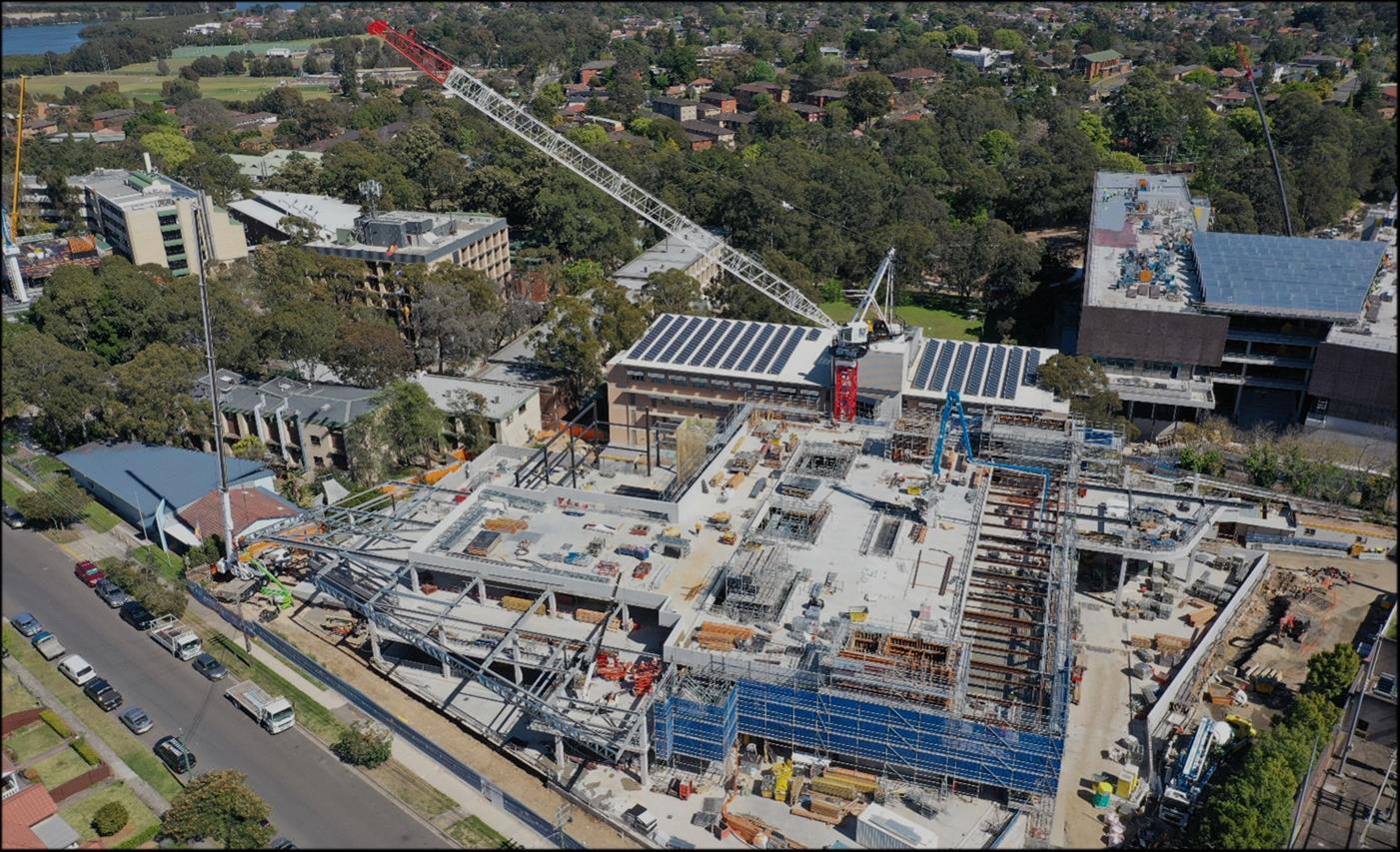
YTB Consulting
Johnathon Walker
George Cory Darroch


YTB Consulting
Johnathon Walker
George Cory Darroch
A GD & JW Draft Submission
1.0 GD & JW Issued for Construction
This CPMP has been prepared for the nominated Head Contractor of the Meadowbank TAFE MultiTrades Hub, Hansen Yuncken Pty. Ltd. The details of the Project Sponsor and Head Contractor are as follows:
CPMP Key Contacts
Role Name
Project Sponsor/Principal
Details
NSW Government/TAFE NSW Contact details are as per TAFE NSW’s direction
Head Contractor Hansen Yuncken Pty. Ltd. This report has been prepared for construction in line with the Head Contractor’s direction.
Aligned with the direction of our client, the CPMP has been developed to guide all construction activities, from the tendering phase through to commissioning, handover, and project close. These activities are directed by several sub-plans, diagrams, figures, and external documents, all of which have been detailed within.
The CPMP has become the intellectual property of Hansen Yuncken, and as such any changes beyond this revision are the sole responsibility of Hansen Yuncken. YTB Consulting accept no liability beyond this current report version.
A Project Charter has been developed as an externally facing overview of the Meadowbank TAFE project, intended as the key point of communication between the Project Sponsor and Head Contractor during the initiation phase of the project. The Project Sponsor is an intended recipient of the Project Charter.
This document outlines the methodologies and assumptions adopted in the creation of the subsequent detailed management plans, while serving as a general overview for how the project will be carried out. Where any information withing the Project Charter conflicts with a detailed management plan, the management plan is to be adopted as the greater authority.

Following the NSW Government’s investment in the Meadowbank Education & Employment Precinct, and the relocation of two schools to the large Meadowbank TAFE campus site, a case for change has been presented to update and improve existing TAFE infrastructure. This is in line with high growth forecasts for skills-based qualifications, and the demand for TAFE to become further aligned with technology and industry.
Strong growth in jobs forecast in both the Infrastructure, Energy and Construction and the Digital Technologies sectors, is driving high demand for associated courses. With the constraints of the current TAFE NSW Meadowbank site, the only way to meet this increased demand is to invest in new infrastructure.
The design objectives for the new TAFE building are to create a learning environment that is a better fit – contextual, and a deeply related part of its surroundings to stand for generations to come as a valuable part of the community. Better performance is also crucial, part of TAFE’s identity as agile and future oriented. Efficiency and adaptability come from sustainable, future-proofed design, and fit for purpose spaces will be a teaching exemplar to the trades industry. An extensive ECI process culminated in detailed schematic design drawings, with workshops and design collaboration to deliver innovation in material selection, low maintenance outcomes and a high level of end user satisfaction.
Following the above, TAFE NSW has proposed to undertake the following works:
• A new Multi-Trades and Digital Technology Hub, featuring:
• A new separate Multi-Storey Carpark
• General TAFE Meadowbank Precinct Works
Meeting the above criteria will mean the Head Contractor has delivered high quality, future focused, innovative, state-of-the-art educational facilities that meet the current and future TAFE and community needs and comply with the client’s design requirements. Achieving the above criteria, as well as the client’s expectation of a major capital works project delivered on time and on-budget, will lead to a successful project outcome for all stakeholders.

The objectives of the Meadowbank TAFE Multi-Trades & Digital Technology Hub are as follows:
• Provide increased opportunities for industry partnerships and collaboration
• Address the changing nature of the workforce by offering practical training experiences
• Improve student experience and amenity
• A valuable contribution to the social and cultural development of Meadowbank and Trades training for the future
The following table presents the major deliverables that the project’s product, service or result must meet in order for the project objectives to be satisfied
Project Major Deliverables
Major Deliverable Description
Multi-Trades & Digital Technology Hub
Multi-Storey Carpark
A new activated TAFE Hub building to enhance learning opportunities with a focus on digital technology
Carparking to facilitate added students and staff travelling to the area.
Precinct Works Deliver upgrades to the entire TAFE precinct, to align with the precinct master plan and better support growth in the area.
The estimated cost for the Meadowbank TAFE development is $110m. This is to be funded in full by the NSW Government. Detailed budget breakdown and cost plan is within Section 7.
Assumptions
• All information drawn from official sources (TAFE NSW, NSW Govt.) was understood to be true and correct
• The scope of works as defined in the Scope Management Plan represents the entirety of the works required
• The project team and Head Contractor have the skills required to deliver the project
• Site investigations have confirmed the details of latent conditions to the satisfaction of the Principal and Head Contractor, such that these risks are adequately detailed in the Head Contract
• Market conditions have been assumed as favorable. Generally, risks beyond Covid-19 have not been included in this report – e.g., timber shortages, steel supply issues.
• All ground conditions have been identified by the Geotechnical report.
Constraints
- Scope:
Regarding scope, constraints are dictated simultaneously by both the client and existing TAFE protocols and campus restraints. Scope management will serve to reduce scope creep and keep corresponding project factors on track.
- Time:
Time constraints come from the TAFE and schools teaching periods. During construction, the project must adhere to the learning periods and their corresponding exam times to ensure that no disruption effects students and teachers at critical times
The end date for the project is also fixed for the same reason. The TAFE must be ready for reopening term 2 2022; this means that OC and completion must be achieved by approximately May 2022.
- Cost:
Due to the NSW Government funding model for the TAFE development, cost constraints come generally in the form of long lead times on approved changes to funding. With a private client, equity may be more accessible and allow more flexibility in the program. However, with Government, all changes must go through a lengthy review and approval process. This means any variances of cost changes can significantly impact programme.

Fig. 3: The existing traffic management constraints on the project
Covid-19 (Force Majeure)
Interface with live TAFE environment
Interface with surrounding neighbours
Complex stakeholder collaboration
Asbestos in soil
Existing Site Constraints
Stringent provisions in head contract to ensure Covid-19 risk is held by client.
Students and access must be carefully monitored. Live TAFE environment means vibration and dust must be minimised. Quiet times must be observed.
Very close proximity to surrounding residents raises risk. Engage with residents and use strict environmental control measures.
Multiple stakeholders mean centralised communication strategies are crucial to success.
Large amounts of asbestos present due to fill. ACM risk is borne by builder based on provisional sum in HC.
Due to the nature of the existing site, significant barriers to material movement and access through local roads exist, as per above figure. Consultation and scheduling deliveries during working hours will seek to mitigate this risk of negative stakeholder interactions.
Team Members
George is an experienced and effective Project Manager. Having completed multiple public projects throughout Australia, he brings a wealth of experience in all facets of a project. Strengths lie with stakeholder engagement and management.
Johno is a well-known and prestigious executive with a large multi-national developer. Preceding over multiple high-profile projects throughout Australia and Europe, Johno brings a wealth of experience in the residential and commercial sectors as a senior executive.
A key identified risk is communication breakdown due to busy schedules and time management. This will be mitigated by scheduling regular meetups to ensure they are adhered to.
A further issue is not being able to visit site or obtain information. Mitigation strategy here is that strict information sharing protocols have been decided on.
For the Meadowbank TAFE project, project scope is defined by several critical documents, policies and requirements. These are an assembly of government requirements, client directives, user requirements and contract conditions, and are made up as follows:
• The GC21 is the latest version of the standard construction contract created by the NSW government and is used on government contracts over $2mil. On the Meadowbank TAFE project, the head contractor will be engaged under a GC21 contract, with some departures.
• The PPR sits adjacent to the GC21 Contract and all contract design documents and provides a detailed written and visualized scope for the intentions of the project. This will include detail surrounding project background and design intent (such as exemplar projects or references); a detailed description of the works, and then a breakdown of the delivery process – from design requirements; to coordination flowcharts, TRG processes, and client communication protocols.
• As with any construction project in Australia, there are several generic compliance requirements the project must adhere too. These include the NCC, BCA (Building Code of Australia) and Australian Standards.
• Further to the above, specific requirements are placed on the project by authorities. Due to being valued over $100mil, the project must comply with State Significant Development requirements. This means preparing an SSDA (which overrides any requirement for a DA (Development Application)) and navigating approval processes. Local council requirements must still be adhered to
• Drawings and specifications are created by the architect and consultants and exist as the main definition of the contract scope. They detail the exact construction, design, and requirements for the finished product.
• VE is a component of the Meadowbank TAFE project and is an ongoing process of working with consultants and the client to minimize costs for the client, refining the product and changing scope where necessary.
Stakeholder Requirements
• Stakeholder requirements are covered in the Head Contract, PPR and SSDA, where details such as community consultation and client reporting structures are detailed.
Deliverables & Business Case
The Meadowbank Education & Employment precinct overall plan includes the construction of a new Multi-Trades and Digital Technology Hub at Meadowbank TAFE, that meets a world class standard comparable to TAFE and vocational learning spaces around the world, creating a new precedent for TAFE in Australia. Specifically, the project will aim to go above and beyond statutory requirements, targeting a 4-Star Greenstar Certification.
This project involves the design completion and construction of a new Multi-Trades and Digital Technology Hub, a Multi-Storey Carpark and Precinct Works as detailed through contract documents, comprising the following:
• A new Multi-Trades and Digital Technology Hub
o Flexible and digitally enabled learning spaces
o Industry engagement spaces
o Staff workplaces
o Meeting rooms
o End of trip facilities
o staff/student amenities; and
o associated landscaping
• A new separate Multi-Storey Carpark
• General TAFE Meadowbank Precinct Works
o Demolition and existing Buildings D and E and make good
o Upgrades to the Southern Plaza
o Adjustments to the grade change between Building H and Building D and E to achieve pedestrian access after demolition of D and E; and
o Minor interface works at the boundary between the new Meadowbank School and the TAFE NSW Meadowbank entry at Rhodes Street.
The Principal’s requirements are to deliver the new TAFE on time and on budget to create a world-class learning center as part of Ryde’s status as an education center. Crucial to this is the ECI phase and value-engineering options provided by the builder during this phase. These include specific cost-saving areas, such as changing the carpark from underground to above ground and separate. This includes constructability analysis. Critical analysis of project management and continual reporting to the client is crucial to project delivery.
Finally, the project must be carried out on time to ensure opening of the new TAFE facilities and upgrades for operation in line with the target opening of the new Meadowbank School by Term 1, 2022.
To achieve handover requirements by the client, a number of factors must be met. In general, the product and deliverables must be delivered to contract requirements – on time and on budget, and to all required specifications. However, from a quality perspective, a number of more detailed provisions are in place to ensure a defect free handover. These are detailed further in Section 8 – Quality Management Plan, however a summary of the key points follows:
• Commissioning and handover activities have been documented and taken place to ensure TAFE staff and facilities managers are trained in using the new building. All necessary records and ongoing warranty and maintenance agreements have been supplied.
• As-built documents and all relevant handover material, and certificates have been provided, including ownership rights to the BIM where relevant.
• All regulatory and statutory requirements (e.g. Occupation certificate) have been fulfilled, and documentation has been supplied to the client.
• Defects, where applicable, have been identified and resolved, or acknowledged as component of the ongoing defects liability period.
Key Milestones
Refer Section 3 – Programme Constraints
Generally, the project is constrained by contractual conditions, contract documents and drawings, as well as time and budget. Specific to the project, however, are the constraints which come with working around a live environment.
The TAFE represents constraints in a number of ways. Crucially, the TAFE calendar must be adhered to –noisy works during class terms must be limited, and noisy works during exam periods must be totally
mitigated. Further to this, SSDA conditions impose restrictions on working times (7am-6pm) that must be adhered to, to alleviate impact on residents and reduce the risk of receiving a fine.
Further, the WHS standard set by the client (NSW Government) means extra constraints are placed on the project in terms of incident reporting and auditing. Resources must be provided by the Head Contractor to allow for these events. This is combined with a complex stakeholder structure of a clientside project manager, meaning clarity in reporting and communication guidelines must be established from the start of the project.
Portions of the public domain works have been absorbed by Roberts Co as part of the construction of the new schools at Meadowbank and are therefore excluded from contract documentation. This is along with all plaza works that include the railway station; rail lines are outside the scope of the project and therefore these works will be undertaken by a civil contractor.
To commence the TAFE precinct works, the existing TAFE buildings must be vacated by a certain date such that demolition can commence. If this does not happen, the program of works will be pushed back. Further, decanting of items into the new building can only commence once the spaces are ready; meaning construction must be sufficiently advanced prior to the Term 2 opening.
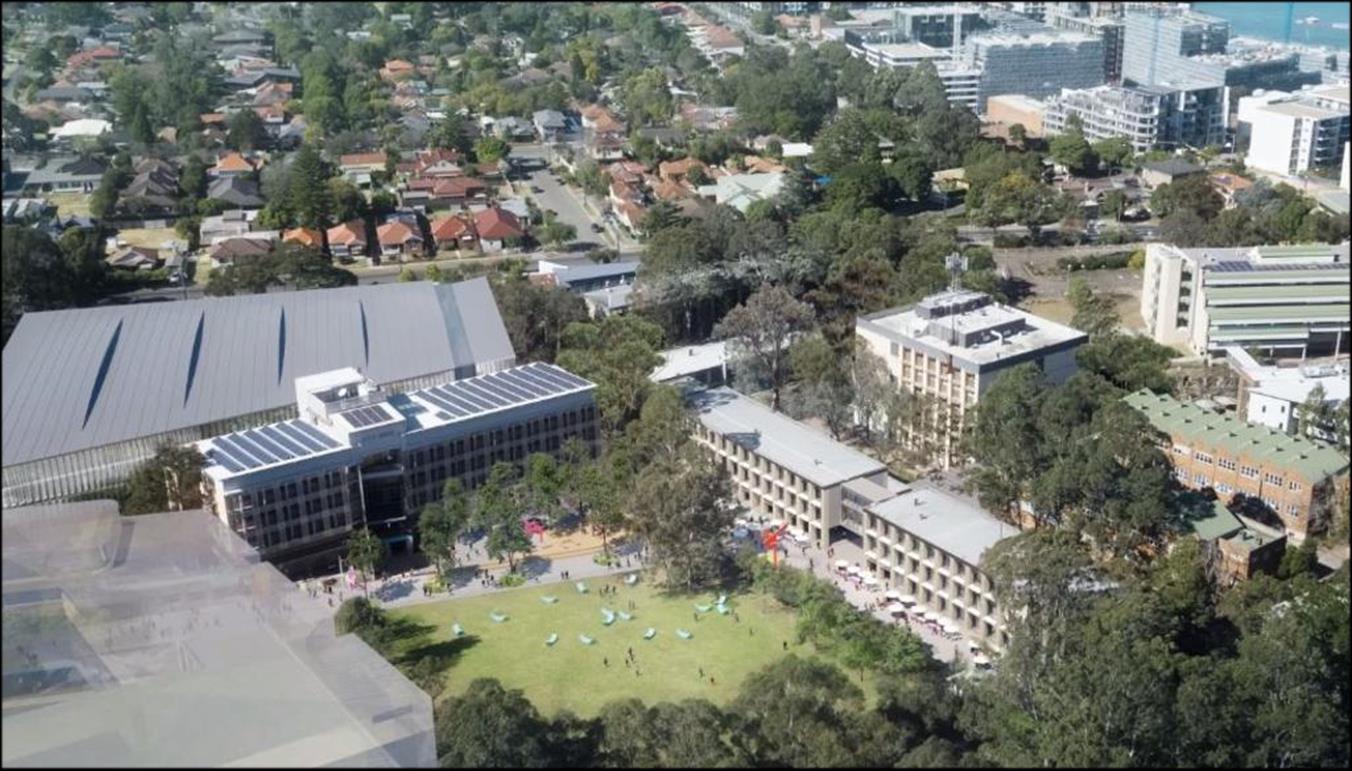
The below attached WBS represents a 3-level breakdown of the work packages on the project. This activity has been performed in conjunction with the estimator’s breakdown to provide an accurate basis for planning the project.
The WBS dictionary entries detailed below provide detailed information for each work package, aiding programming, and cost estimation activities. The major input to this process is expert knowledge, often involving people from the entire project team to ensure dictionaries are accurate.
2.1.4
Early Works - Piling
3.1.1 Main Works – Bulk Earthworks
Install secant piles to perimeter of excavated site.
1. Surveyor to set out pile center line
2. Piling rig to be brought to site
3. Piles to be bored over center line
4. Piles filled with reo cages and concrete
5. Secondary piles bored and filled.
Remove bulk material around site, approx. 45,000m3
1. Machines to be brought to site, including rock cutting attachments
2. Set out to commence, also using GPS capabilities
3. Excavation and cart-off of VENM to commence
4. Regular checks of excavated depth and area to be performed
4.1.2
External WorksLandscaping
Install hardscape, plants and associated benches, railings etc. to external areas
1. Hardscape detailed excavation, set out and reinforcement place to commence
2. Concrete pour to hardscape
3. Planting areas to be laid out manually
4. Soil and mulch to be laid
5. Plants to be placed as per drawings
$110k Allocated
Key Dates: MBT Handover: 13/5/2022
Piling Begins: 24/7/2020
Piling Finishes: 19/8/2020
Access to site area is unimpeded for piling rig
Surveyor set out is assumed to be correct
Piling activities contingent on concrete curing time for primary piles
$6.2M Allocated
Key Dates:
Bulk Starts: 11/3/2020
Detailed Excavation Begins: 19/9/2020
Pad Footings Commence: 20/11/2020
$90k Allocated
Key Dates: MTH Completion
Date: 11/5/2022
Landscaping Commences: 29/3/2022
Machines can be delivered to site via trucking routes without issues
Ground conditions are as per Geotech report
Installation meets drawings and required specifications
Installation is certified by structural and geotechnical engineer
Installation meets Australian Standards
Installation meets drawings and required specifications
Excavations must be certified by Civil/Geotechnical engineer, verifying depth and accuracy of cut
Excavation from others is correct and to appropriate depths, requiring no extra fill
Plants etc. will be procured early and available at appropriate time
Installation meets drawings and required specifications
Hardscape installation must be approved by Architect, and Landscape Architect must inspect planting
Scope validation is the process of assessing deliverables, and formally accepting them. This process occurs at both the head contract and subcontract level. Deliverables are generally verified by the builder, as well as third party consultants, before being passed on to the client for final approval.
This process occurs continually throughout the construction of the building, in several ways. Firstly, the builder expects the client to have engaged a QS to validate the builder’s progress claims. This means with each monthly claim, proof of works being completed must be submitted – through photographs, dockets and physical site walks.
Further to this process, the client must formally accept completed parts of the product. Generally, QA documentation is handed over throughout the construction cycle, evidencing correct installation, which is reviewed by a third-party consultant. The client also expects contract requirements to be met – such as BCA compliance – for which approval will be sourced by the builder and passed on to the client as proof of works being completed to required specifications. The same occurs for the Greenstar requirements at Meadowbank TAFE – by the builder meeting all required criteria, the award of a 4-star Design and As-built verification is a method of communicating to the client that these criteria have been met.
Finally, the client and their representatives will progressively review works (often monthly), raising any defects where they believe the product is non-conforming, and therefore formalizing acceptance of the final product. The client may enter the site at any time for an audit or inspection when desired. Payment of any retention to the contractor/builder at the end of the warranty period marks the completion and close-off of the project for the builder.
Subcontractors generally have scope validation requirements written into their contract, generally consisting of producing a defect-free outcome, and meeting all required standards and specifications in delivering their works. Like the head contract, payment of any retention signifies that works have been completed defect-free, that the warranty period (generally 2 years) has finished, and the subcontract has been closed.
Subcontractors also have obligations as to QA and record keeping. ITP’s must be submitted by the SC for each portion of the works completed, and where necessary third-party certification must be shown. Using the example of a scaffold system, the scaffold contractor will usually be contracted to provide their own engineering sign off for any scaffold structures, and these sign offs must be presented to the builder as evidence of works being completed to scope and contract conditions.
Subcontractor Completes Work Package/Subpackage
• Any and all deliverables associated with the task are categorised
Head Contractor inspects the work for defective or noncompliant output
• These defects are logged against the work package in management software
Subcontractor moves to rectify defect, or Head Contractor rectifies on their behalf if not possible
• Monies withehld from subcontractor where relevant.
Deliverables move to Head Contract scope validation stage, detailed in Quality section.
• Refer Section 8 Quality Management Plan for further information
Scope monitoring and control generally comes from the project team having a strong understanding of the drawings, and the quality and completeness of said drawings. A contractor will generally not price a job when drawings are less than 80% complete; this reduces their risk for scope changes.
Throughout the project lifecycle, the best way to minimize risk from changing scope is to push risk onto subbies in Subcontract documents; however, prior to this transfer of risk, RFI’s etc. are an ideal method to gain understanding of the drawings and any detailed requirements.
Scope change is primarily managed through several mechanisms in the Head Contract. While the principal is entitled to make changes, these must be notified to the Contractor in writing, and the Contractor must submit an estimate for the fair value of the extra-over works on a cost-plus basis.
In general, scope changes are managed through the Change Management Plan. This includes steps to assess the changes and price them, then (in the case of the Meadowbank project which is Design & Construct) the Contractor will issue an instruction to their consultants to update project drawings.
1. Change request initiated by Principal, or Head Contractor. This must be in writing and via Aconex or other approved communication channels. Variation agreement is drafted.
2. Project Manager and senior management team assess the change request and prepare formal notification to the client of time, cost and other impacts.
3. All project team members are notified, as well as Subcontractors where necessary. Additional works will be communicated through project documents such as drawings, and may result in subcontract variations.
As part of our detailed assessment and preparation to accommodate the principal’s project requirements a comprehensive design and construction programme has been developed to schedule the successful delivery of the TAFE project.
We are committed to being at the forefront of technology. Throughout the preconstruction and delivery phase, we have and will continue to look to utilize 4D BIM models produced for the project to assist in the analysis of the proposed methodology and address any challenges associated with the buildability of the current design. These BIM models are linked directly to the programme, adding the element of time to the model's geometry, providing the team with a visual approach to planning in the form of a 4D BIM simulation.
The 4D BIM model and professional expertise of the project team are the key assets relied upon to create the project schedule. A PERT analysis will be undertaken with the broader team to ensure a detailed review of the program and enable iterative reviews. This will then feed into a standard refined CPM schedule model.
The following scheduling tools and techniques were used to develop the project program:
Our highly experienced project team truly sets us apart from our competitors, ensuring the project is completed on program. The project team is the driving force behind the integration of our refined program/schedule management processes that promote collaboration, management, and consistent refinement of the program throughout the project lifecycle
The critical path within the program has been clearly identified. Critical activities have been highlighted and bordered in red, whilst activities with float attached have been illustrated in blue. Critical Milestone and Phase Planning Workshops are being undertaken ahead of time, these workshops require the involvement of the entire project team, key consultant representatives, trade supervisors and suppliers to ensure a coordinated and accurate execution of the programme Throughout the TAFE project, Critical Milestone and Phase Planning Workshops are being conducted for the civil works, substructure works, structural frame, façade, services, fitout and throughout handover and commissioning
The project team have relied upon an extensive Historical Data library that identifies lessons learnt regarding scheduling for previous projects similar in nature. The Historical Data allows for a well-
informed approach to program methodology and highlights potential delays or issues that need to be considered throughout the project lifecycle when developing the program.
The Project Team are committed implementing strategic Resource Levelling which involves shifting program tasks that do not impact the critical path, the amount of shift is determined by the tasks float. This is done to reduce the stress on resource and optimise productivity
The 4D BIM Modelling Illustrates the project’s construction methodology and key construction intervals to demonstrate the progress of the construction works at nominated stages. The BIM model provides a visual and interactive tool that allows for deep understanding and critique of the construction methodology 4D BIM Modeling is highly effective when detecting clash detection, The model provides a visual reference for project progress which not only benefits our project team but the projects Stakeholders who are not familiar with the technical intricacies or stages of construction
The Project Team has implemented PERT throughout the development of the project program and its operation throughout the duration of the project. PERT highlights the likelihood of on time programme completion whilst simultaneously tracking project progression. PERT will be checked by the project manager on a regular basis to ensure the project is meeting set milestones and the overall program health.

Fig. 7: An example from the Powerproject software showing 4D capabilities
A comprehensive project program has been produced to the industry standard Gantt chart layout. The program was developed using Asta Powerproject, integrating 4D BIM modelling and project team expertise as guidance and reference. The three level WBS informed the first stage of program creation, followed by in depth workshopping with the Construction manager, Project Director and Project Manager.
The program development process consisted of clearly identifying all major activities, milestones and dependencies that were determined to provide the most efficient delivery of the project. Critical Phase Planning Workshops are undertaken ahead of a critical phase of the project and include the involvement of the project team and key members of the consultant team, trade supervisors and suppliers.
For the TAFE project, we will hold critical phase planning workshops for civil works, substructure works, structural frame, façade, services, and fit-out related trades to identify critical tasks and required deliverables for completion in relation to the projects schedule baseline. The critical path is clearly identified. Critical activities have been highlighted and activities with float attached have been illustrated.
The method undertaken to estimate the projects activity durations revolved around integrating project workshops, historical data, consultants advise and project team expertise. Tracking activity duration from previous projects enables accurate schedule related estimates to be proposed. Drawing upon the historical databases of similar projects average time for completion can be established for various schedule tasks such as concrete pours, formwork stripping or waterproofing. Weekly Project Team schedule review meetings assist in the active management and maintenance of the project program as the works progress in real time. The Project Team will also involve the key trade representatives to provide feedback and status updates on ongoing and future works
The key theoretical method used for the project’s activity sequencing is CPM (critical path method). All standard logical connections are used, as per standard CPM practice. These connections include finish to start, start to finish, finish to finish and start to start. All floats have been calculated and included.
Significant time has been allocated to ensure coordination between services, finishes and fitout has been sequenced and integrated into the program ensuring smooth and predicted progression. Where plausible the Project Team has integrated time allowances for prefabrication of components off site into the program. This facilitates efficient installation and increased quality control, ultimately leading a more efficient program and de-risking time-dependent components.
The construction methodology for the TAFE considers the building as two independent structures, with the North structure separated from the South structure by the central atrium. This approach to the construction methodology allows for optimization of the schedule through strategic sequencing of multiple trades and tasks. This is reflected within the internal fit-out which progresses between the two buildings without being required to wait for individual floors to be completed as other trades move through. Concrete pours have also integrated breaks and sequencing to optimise program efficiency This slab on ground pours which will follow the completion of the detailed excavation start from the higher levels and progressively work down. Following the completion of civil and bulk earthworks, the HUB structure will commence.
The following (page over) schedule/ program baseline is the final approved version of the program model. We recognise the schedule/ program baseline document as extremely important to the projects time management as it governs the projects overall estimated timeline, milestones, and critical path.
The elected Progress Measurement process for monitoring and assessing progress made within the project’s program will be a milestone-based progress measurement system. The TAFE Project program when loaded into Asta Powerproject has a total of four milestones that have associated percentages of completion related to them. As the project progresses and scheduled tasks are completed the percentages of completion will increase and subsequently provide a reliable and consistent progress measurement system for monitoring and control purposes.
In total the gross project duration undertaken by the head contractor will be 21 months. The main project milestones are listed below.
Main Contractor Appointment 06/04/20 113d 19/09/22
ECI Phase 28/10/19 275d 04/12/20 Procurement 18/11/21 369d 18/11/21
Appointment
Procurement Substructure Civil 16/09/20 26d 23/10/20
Procurement Superstructure Roof Coverings 28/10/19 67d 13/08/21
Procurement Superstructure Roof Safety 18/11/21 62d 13/08/21
Construction Phase Early Works (Phase 2)HUB Tree Clearing 14/10/20 10d 26/10/20
Construction Phase Early Works (Phase 2)HUB Civils 23/010/2 0 85d 26/02/21
Construction Phase Early Works (Phase 2) Completion 26/02/21 10d 12/03/21
Construction Phase Main WorksHUB Structure 13/02/21 137d 20/08/21
Construction Phase Main WorksHUB Structural Steel 29/06/21 56d 09/09/21
Construction Phase Main WorksHUB Formwork Strip 16/06/21 46d 14/08/21
Construction Phase Main WorksHUB Façade & Roof 07/07/21 108d 29/11/21
Construction Phase Main WorksHUB Finishes 28/07/21 169d 25/03/22
Construction Phase Main WorksHUB Handover 18/02/22 82d 10/06/22
The Project Team will undertake weekly programming and upcoming task planning meetings where progress status is updated. This will require the update of tasks, resource availability and cost. Monthly management meetings as well as PCG meetings will be undertaken to review and manage the program as the project progresses.
Key Project Milestones Considered.
Project cost management is the cyclical and continual process of ensuring costs for a project are tracked, understood, and forecasted such that the project team and project manager have a firm understanding at any moment of the financial performance of a project. The overarching aim of any cost management process is the same as the key aim of the project, and of the business – to deliver a profit.
This section will discuss cost management processes which occur at a project level, where the project manager is then responsible to upper management for cost performance. When understanding and planning cost management, all facets of cost must be considered - from client facing costs such as progress claims and variations, to all internal monitoring of spending against budget, ETC, EAC and graphical measures - such as PV, EV and AC. When used accurately and holistically, the following processes will aid in delivering a successful, profitable project.
Cost estimation is the crucial preconstruction process of estimating and breaking down the costs for the project in a holistic sense, to obtain a price suitable for bidding on the project. An unprofitable project delivers no benefit to a business or its shareholders; thus, accurate cost estimates are critical in the early stages of any project.
Following this, an estimate must be made of the approximate costs of the project, to bring together a tender. An estimate for the TAFE project is to be prepared in two stages: an initial high-level ‘cost plan’ will be created to aid with deciding on the feasibility for the builder to undertake the project. The second step, which comes when the Main Works for the project are being officially tendered, is to create a detailed cost breakdown/estimate. This information is used not only for the builder to plan the project and their profits, but to present a final price to the client (TAFE).
A cost plan is an initial estimate of the cost of a project, created by a builder as a preliminary screening method. This can be put together rapidly, and once created, the high-level cost plan can be given to senior management to allow them to make a decision on whether to proceed with the project/tender or not. The cost plan may be put together using the following methods:
• Initially, an analogous estimate may be made. This is a top-down estimate and looks at approximate costs based on previous similar projects. An analogous estimate can be created in minutes and allows for instant understanding of the project.
• More advanced techniques can then be used to refine the cost plan. These may include parametric estimates – where historical data on different work packages is used to generate
costs, or a three-point estimate – where existing data points have an uncertainty and risk factor added.
Following the initial ‘go’ or ‘no-go’ decision by senior management, a detailed estimate can be created as part of producing a tender or bid for a project. This is put together by the estimating team as follows:
• Firstly, using the project programme, a cost breakdown structure is produced as subset of the WBS. This allows the team to view all related costs – such as preliminaries, council compliance, subcontract work, and commissioning costs.
• Following this, the estimating team will perform a take-off from the drawings, and issue these to subcontractors to receive market prices for sections of the work. Tenderers are selected based on their capability and experience in delivering similar projects, along with their ability to work with the builder on safety, quality, time, and environmental requirements. An example of this quote comparison process for the TAFE is given below:
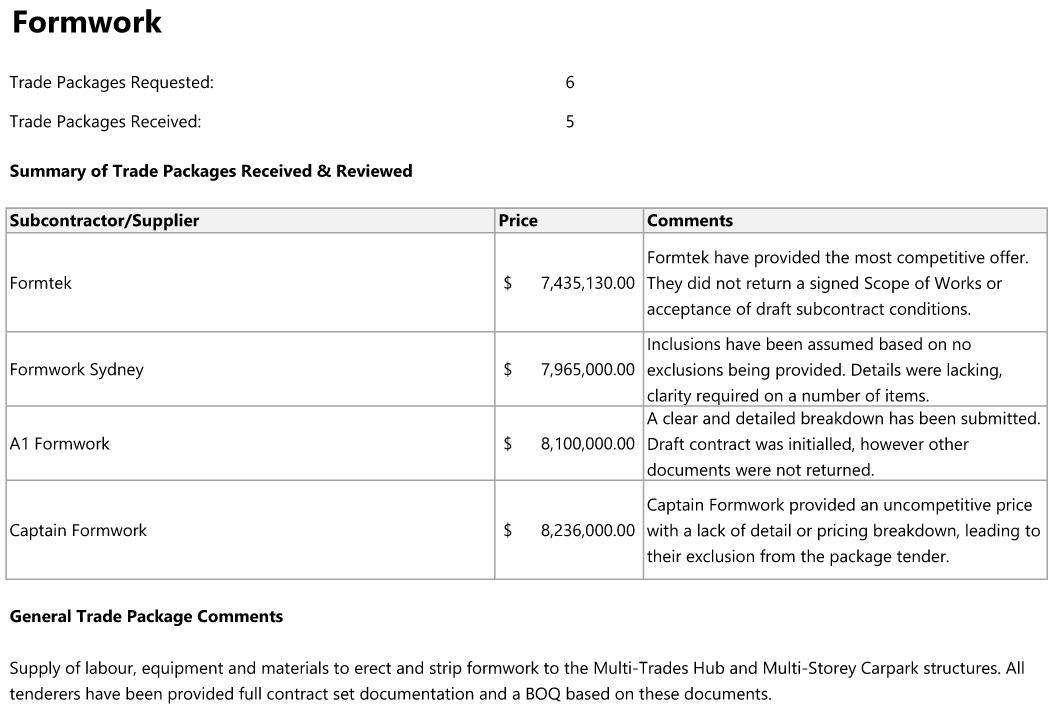
One critical step in creating the budget is to review the estimating work done to date and identify opportunities for Value Engineering. These decisions are made in tandem with the client and designers throughout the ECI phase and allow the builder to have input of the design as it is developed, ensuring opportunities for savings in construction are realized. Examples of VE elements may include:
Value Engineering Item 1: Carpark Innovation - $4.8M
- Original design documents for the project show the carpark constructed below the new Multi-Trades Hub, requiring significant excavation and extra structural works to complete. The builder has proposed an alternate carpark be built separately, in a different location on campus, saving time and cost for the client.
Value Engineering Item 2: Skylight Reduction by 25% - $400k
- On consultation with the architect and client, the decision was made to reduce the total skylight area. While still allowing large amounts of natural light, and meeting design criteria, the reduction represents a significant saving for the client.

Finally, with the aid of senior management, margin and contingencies for the project will be estimated. For the TAFE project, a standard margin approach of 5% has been utilized. Included in this process is the inclusion of contingency; this is an allowance for risk, and is intended to allow for weather conditions, interest rate changes, force majeure events (e.g., Covid) and material price fluctuations. A key example of this would be changing steel prices, an issue the industry is facing at the current time. As tender discussions progress, these contingencies and profit margin may be reduced – this occurs to improve the chances of the builder winning the work and is done so at the discretion of senior management.
In the case of the TAFE Multi-Trades Hub project, the builder is contracted on a design and construct basis. This means any budget estimate is made at tender time under the premise that design is to be developed further. As such, design risk and cost change risk fall on the contractor, and therefore budget movement is inevitable. This process is discussed further in the cost control section; however, it must be noted that the final Cost Breakdown Structure below is based on a design that is only 80% developed –and further changes must be managed to be cost neutral.
See below detailed cost breakdown structure, representing the makeup of work packages for the project. This is to be read in conjunction with the Work Breakdown Structure, and below high-level cost summary.
Planned Value is a critical foundational project control measure, established to ensure monthly progress claims and cash flows are suitable to ensure a positive revenue stream for the business. This diagram essentially represents a project-level forecast for the cost performance of the entire TAFE development, and allows the project team to accurately predict and manage cash flows where necessary.
As the Meadowbank TAFE Multi-Trades Hub represents a single building; relatively traditional construction method, cash flow forecast closely match the average ‘S-curve’ shape.
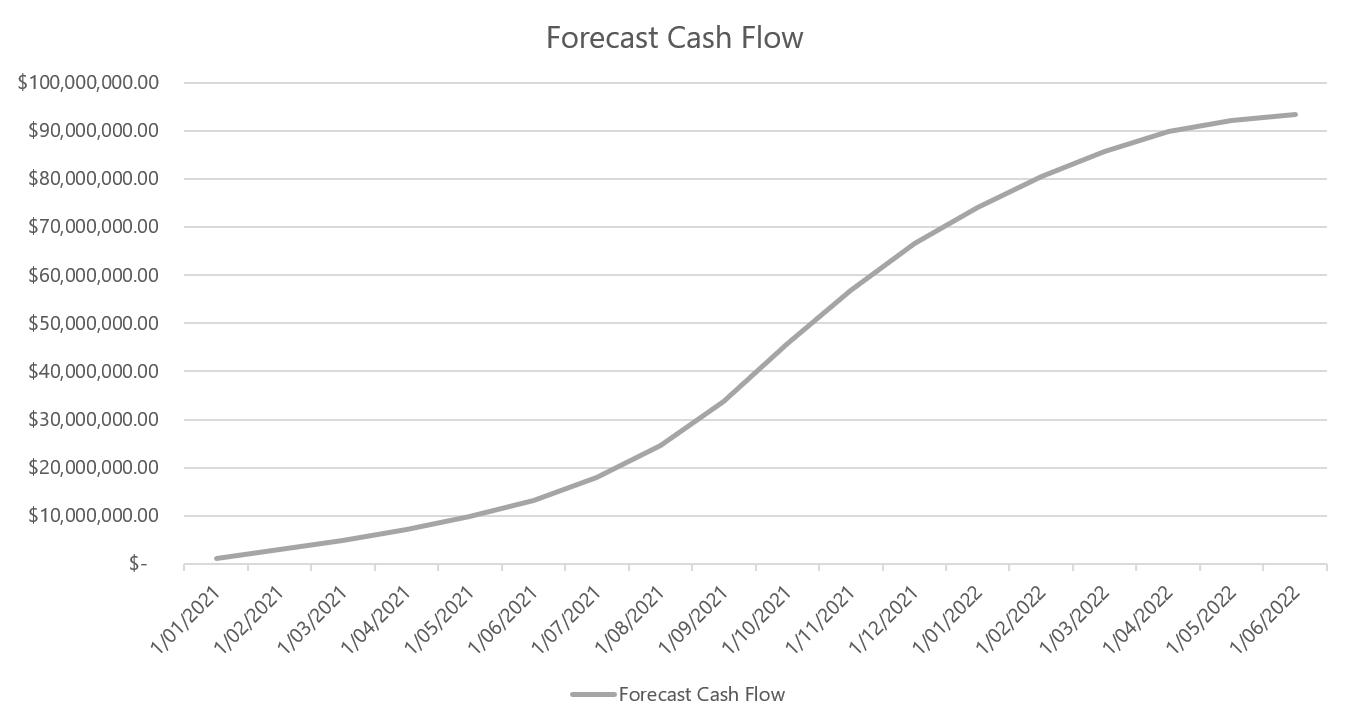
Head Contract Administration
Responsible: Project Manager, Senior Contract Administrator
• Manage monthly progress claims and substantiation, aiming for a consistent cash positive position.
• Maintain communication with client via monthly coordination meetings.
• Update project baselines, including programme, cost baseline, variation register and design departures to reflect progress
• Notify the client formally when required – e.g. Extension of Time, Delay notices
• Have a strong understanding of risk allocation within the contract – for example, an understanding of which party holds latent conditions risk, or float risk in the programme
Subcontract Administration
Responsible: Senior Contract Administrator, Contract Administrator, Cadet
• Progressively let subcontracts for the entirety of the works.
• Manage and control progress claims, ensuring SOPA conditions are followed, and ensuring scope is being met by the subcontractor.
• Issuing back charges where relevant if SC’s fail to meet agreed contract conditions or programme.
Ordering and Purchasing
Responsible: Contract Administrator, Cadet, Foremen
• Raise Purchase Orders for all minor expenditure, ensuring continual costs are being tracked and forecast where necessary
• Report on purchasing related to preliminaries to ensure expenditure is kept under control by the project team.
Cost performance measurement is concerned with the tracking and forecasting of the project’s financial performance over time. At a high level, costs can be tracked using earned value measures. These methods consider several critical project measures; work completed as per schedule; milestones met; and money spent to date. Thus, a graph can be created which displays all these factors and provides a
visual aid as to the progress of the project. This can be compared to a baseline to track progress. Essentially, EVM measures project performance over time.
EVM measures form a key component of both the Head Contractor’s internal reporting, as well as client reporting, PCG meetings etc. Measures such as the Cost Performance Index and Schedule Performance Index will be used for client reporting; these captures varied unique pieces of project data in a summarized, communicable nature. In order to create these measurements, initially Planned, Earned and Actual values must be determined. Planned value and Actual value form component of monthly forecast reporting and are therefore already understood. Earned Value, however, must be calculated. This can be done in several ways; namely:
At the builder’s level, these measures are conducted and reviewed on a regular basis (usually monthly, matching SOPA monthly payments) such that the project team can review and account for progress to date. Along with additional tools such as Staff Plots and schedule baselines, schedule, cost, and their respective performance indexes can be scrutinized.
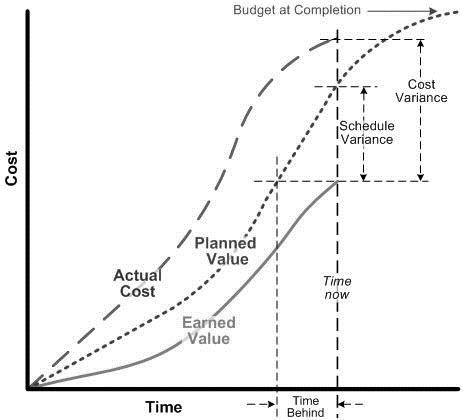
As part of the natural development of a project, at times performance may differ from the desired baseline. This may come in the form of exceeding schedule or cost performance limits. If these concerns are raised to the client, in the case of the TAFE, initially a review of contract conditions would take place to ensure the principal is protected against issues caused by the contractor.
On the contractor’s side, the processes in place around such an issue would involve crashing schedule or adding financial resources to the project. This would allow works to sped up if necessary, employing extra over labour. This may mean the project is in a negative or weak cash position, however these measures may be necessary if they avoid greater issues under the head contract. In the scenario of the Meadowbank TAFE, no major issues with cost or schedule tracking have been reported yet.
Cost monitoring and control is proactive and is used to predict the outcome of a project based on actual costs, which allows preventive or corrective actions to avoid variations in final cost.
• A reduction in scope (e.g., removing a portion of landscaping works) will affect the total contract value, and thus reduce the overall cost of the project and therefore potential profits for the builder. This scenario is generally avoided by builders.
• A change in scope such as reduction of a provisional sum may however have alternate effects under the GC21 standard head contract. Here, if a share of savings contract has been employed, while the contract sum will stay the same, both the principal and contractor may stand to benefit from an increase in share of savings.
Cost variance response is a process triggered by project control measurements moving outside of an established range. If either SPI or CPI (previously identified) are to shift outside of allowable bounds, a cost variance response is required to correct the issue and ensure contract conditions are met. When variances for either figure are between 0.1 and 0.2, this identifies a minor issue, that requires internal adjustments to ensure the project continues tracking to plan. When variances exceed 0.2, a crucial error has occurred which must be reported to management and requires urgent action.
In terms of PCG reporting to the project sponsor, CPI and SPI also represent critical measurements used to communicate project progress. When a variance occurs, which exceeds contract allowances (>0.2 away from unity), the Principal must be notified in writing. As per contract conditions, the Head Contractor must provide in writing a plan to remedy the issue (corrective action), within 7 days of notification. This must be treated as an internal variation, and any associated costs are to be mitigated where possible. These actions are detailed as follows:
Individual trade package variances (as per Head Contract BoQ) of less than 10% are to be absorbed by the Head Contractor, and must be notified internally
Variances (either positive or negative) of greater than 10% must be reported to the client, with a formal variation request provided if necessary.
Variances greater than 25% become the sole responsibility of the client, and represent a deprture from contract scope, away from contingency allowances etc.
When amendments arise from the client’s request to project deliverables or scope, these may trigger a Head Contract variation. Generally, considering a design and construct contract, minor changes or updates to design are to be captured in the Head Contractor’s scope, falling under the responsibility to complete design documents and capture design intent. However, when changes fall outside of the original design intent, the Head Contractor must comply with the client in delivering a formalized variation and associated pricing.
• Initially, the Project Manager should utilise schedule and work performance data to verify the work performed to date. This can be compared against relevant baselines.
• Next, the PM may review funding sources for a large variation. They will likely review:
o Cash-flow (present and future), to verify that cash is available if any significant costs need to be incurred rapidly. Shortfalls identified will allow escalation.
o Consistent forecasting must be reviewed to ensure large payments in the short term are not upcoming. If not identified, these payments could potentially severely impact the cash position of the project and make rapid adjustments difficult.
o All of the above should occur on an ongoing basis, but specifically reported and finalized monthly when presented to senior management. Adequate resources must be deployed for forecasting.
• A formal Request for Cost Change can now be submitted internally to the PM. This will detail all associated costs and baseline impacts for their approval. A change with greater cost and time implications may be forwarded on to Senior Management.
• If approved, the change must be logged, communicated to the client and then all baselines must be updated (schedule baseline, cost baseline, performance measurements).
Considering Meadowbank TAFE’s D&C Contract type, the Head Contractor has a responsibility to proceed with changes that align with the design intent and represent a cost neutral approach. This is component of their commitment to continue design and consultation from the Developed Design phase to IFC documents. This process workflow is as below:
RFI is sent to the client (via Aconex), including Superintendent in correspondence.
Client responds to RFI with direction. If captured by design intent, changes to be included in drawings at no extra cost.
If requested changes go beyond the design intent, a formalised variation is prepared by the Head Contractor. Advised to Superintendent.
Superintendent will issue a response in coordination with the Client, issuing a site instruction or formal acceptance of variation and instruction to proceed.
Head Contractor to complete the works, updating baselines where necessary to communicate to Superintendent. Any risks from this point are to be allocated as per Head Contract agreement.
Organizational Breakdown Structure (OBS) is a depiction of the project organization hierarchy that aims to highlight the projects responsibility and reporting structure. Please see our organization structure currently implemented for the project.
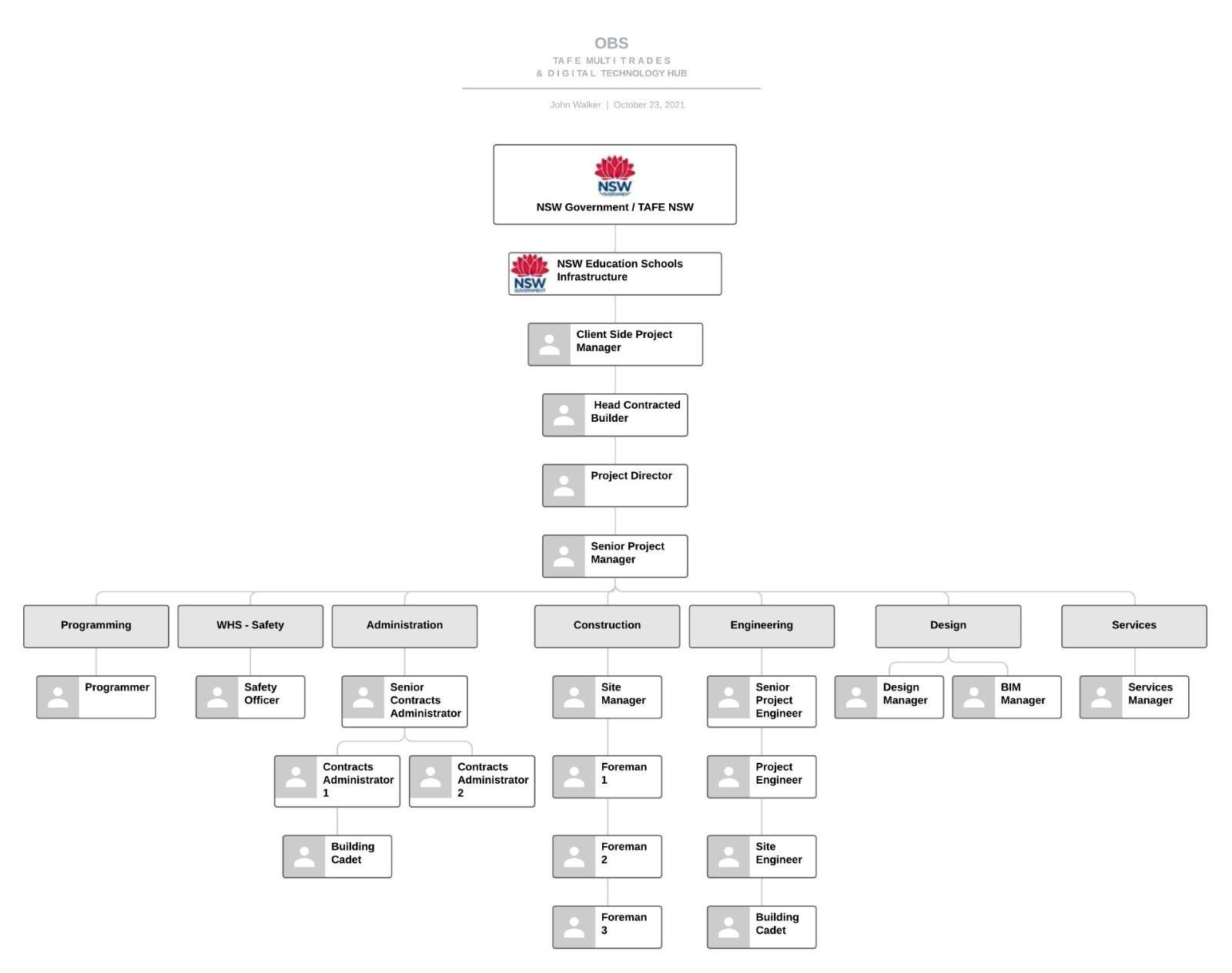
Project Director (PD):
Works closely with clients from the outset to understand required project outcomes, overseeing all facets of the project to ensure successful delivery. Maintains positive relationships with clients to guarantee project success and provides ongoing leadership to the team across all disciplines.
Key Skills:
- Achieving Client Outcomes
- Budgeting
- Programming
- Leadership
- Planning
- Interpersonal Skills
- Negotiation
- Veteran Project Experience
Senior Project Manager (SPM):
Responsible for the overall delivery of the TAFE Technology HUB Oversees and manages key aspects of the project such as the programme, budget, and quality. The PM oversees the evaluation and development of the projects reporting, approvals, and performance of both the project team and subcontractors.
Key Skills:
- Budgeting - Programming - Leadership - Planning - Stakeholder Engagement
- Interpersonal Skills - Negotiation - Extensive Project Experience
Senior Project Engineer (SPE):
Providing immediate support to the Project Manager in managing the project in accordance with company policy and procedures. The Senior Project Engineer oversees and manages a team of Project Engineers and Cadets, allocating tasks and deliverables accordingly. The Senior Project Engineer aims to
ensure the projects successful and timely completion and to achieve objectives for quality, time, safety, environment, profit, and client satisfaction. This can include document control, quality control, program statusing, defect rectification, chairing design and authority meetings, liaising and negotiating with subcontractors and being responsible for RFI queries.
Key Skills:
- Administration
- Planning
- Quality Control
- Programming
- Defects
- Design
- Interpersonal Skills
- Project Experience
Senior Contracts Administrator (SCA):
Responsible for the overall administration of the project whilst providing immediate support to the Project Manager in overseeing responsibilities such as the preparation of subcontract packages, scope of work, procurement schedules, issue of variations, budget related administration and the coordination of site meetings and workshops. The Senior Contracts Administrator oversees and manages a team of Contract Administrators, allocating tasks and deliverables accordingly.
Key Skills:
- Contracts Management
- Building Code Compliance
- Subcontractor Engagement
- Reporting Analytics
- Interpersonal Skills
- Negotiation
- Extensive Project Experience
Responsible for the projects site operations monitoring and controlling related time and cost factors. The Site Manager oversees project progress and is responsible for the site teams safety, quality control and leading the operations onsite. The Site Manager oversees and manages a team of Foreman, allocating tasks and deliverables accordingly.
Key Skills:
- Programming
- Defects
- Project Delivery
- Site Coordination
- Site Awareness
- Knowledge of Construction Processes
- Attention Detail
- Subcontractor Management
- Interpersonal Skills
- Project Experience

Workplace Health & Safety RACI
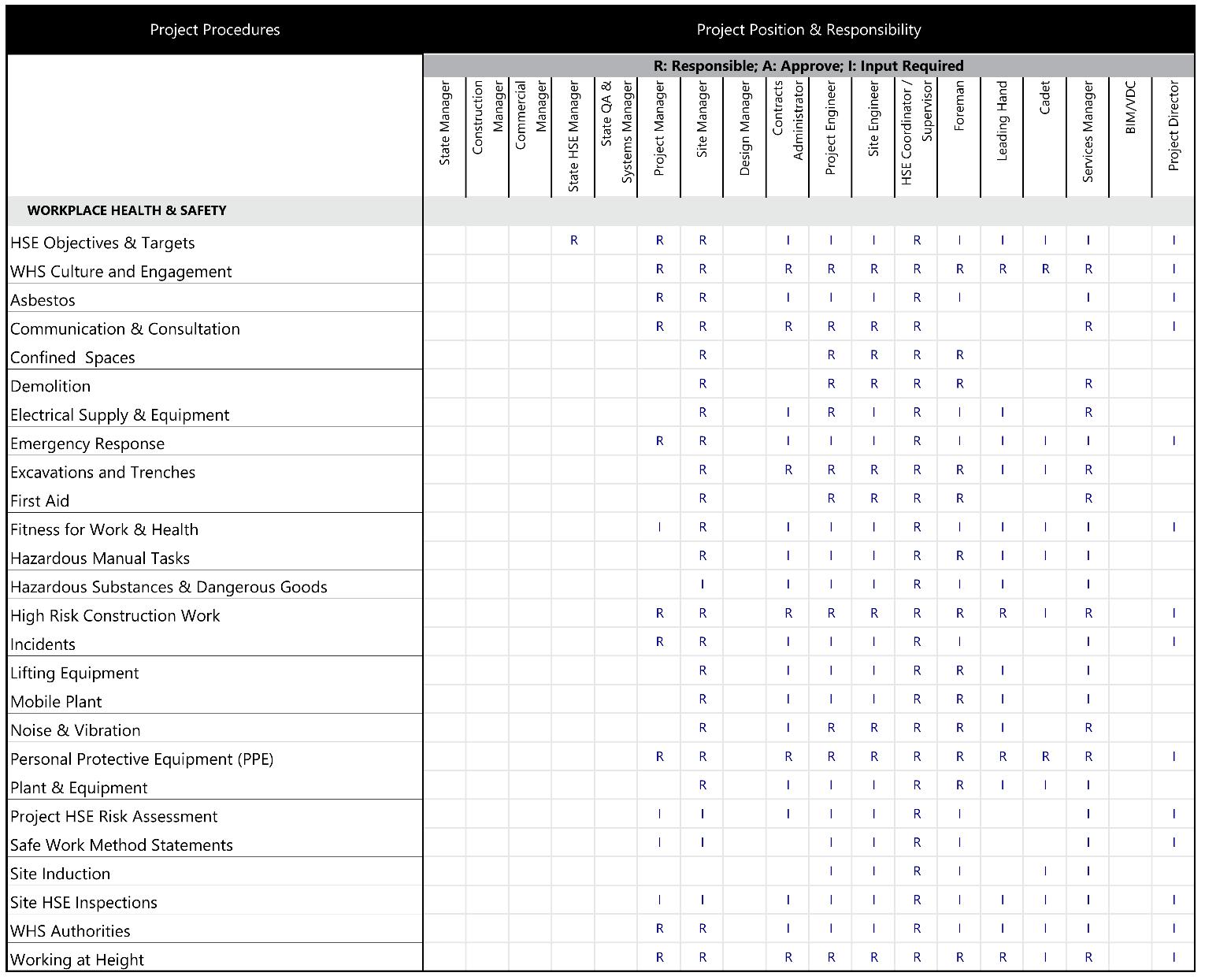
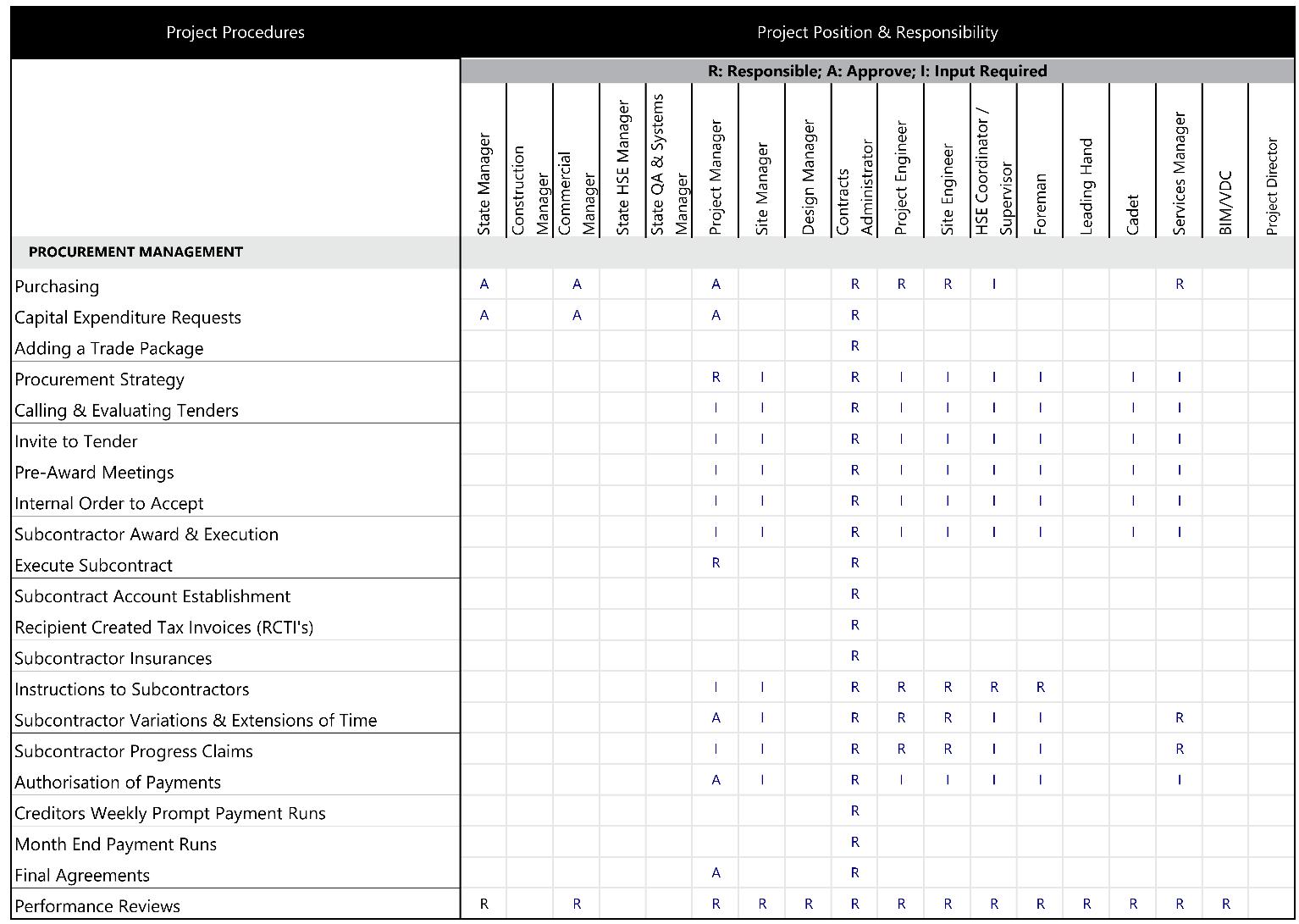
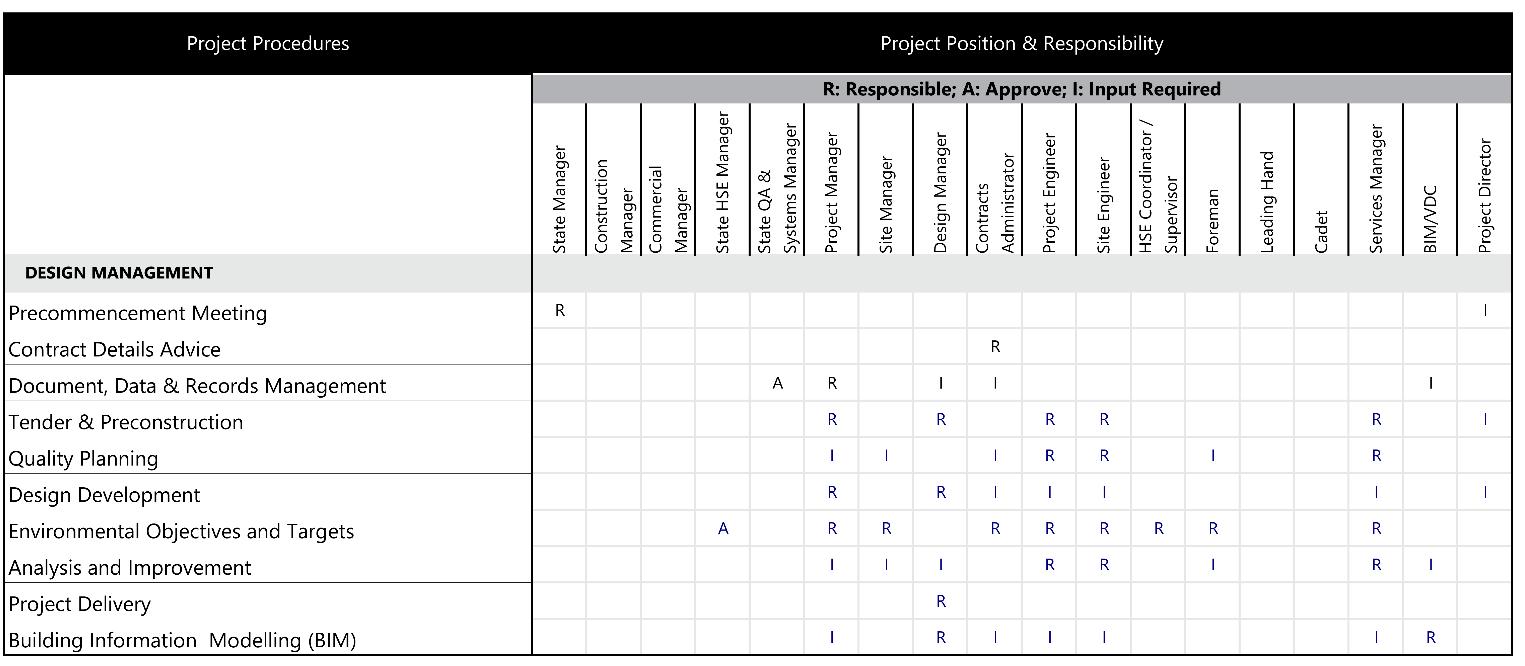
THE YTB Release plan is implemented as a key milestone or project is reaching completion. Staff will be given extensive notice when the end of a particular task or project is reaching completion. Contracts will be offered to project team members who have performed throughout the duration of the project. HR will be involved extensively in the review and support of staff. Project team members who are not carried through with the company will follow due process outlined in the YTB standard employment contract.

Total Days Worked by Role
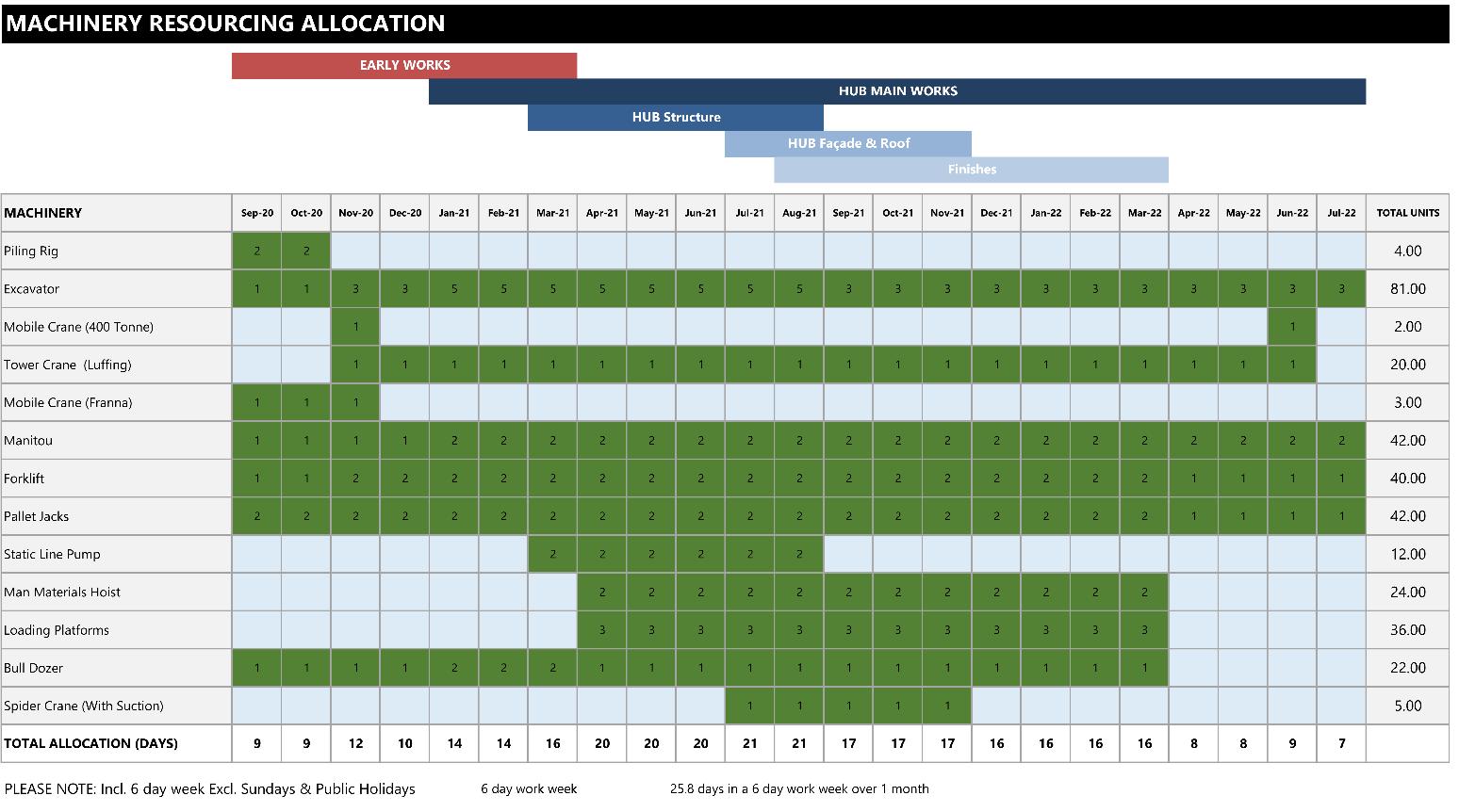
Any individual entering the work site with the intention of completing works must have a registered white card, they must also undergo the site induction process and answer all questions required through the BIM360 onboarding process. A member of the project team will complete a walkthrough with the inductee highlighting key locations of access, exit and evacuation points, first aid and nurse call locations Induction
12. Site Housekeeping & Security
13. Unexpected Finds Protocol - Heritage 14. Construction Parking and Worker Transportation
15. Code of Conduct
16. BCA – Building Compliance 17. NSW Codes Practice
Specialised task training looks to target safety induction information to personnel operating specialised or heavy machinery and workers undertaking high risk works. These individuals will be taken through additional safety measures by a project team member.
Visitors will be required to sign in at the site office, from there they will be issued with PPE and accompanied by a member of the project team throughout their visit to the site
YTB Constructions Measures project performance through the calculation of labor productivity, site population and programme comparisons. This is derived from the following:
- Man-hour ratio >100% (Monthly man-hours / Planned man-hours)
- Baseline Programme vs Status Programme Dates
- Productivity index > 105 (Final contract sum / Total man-hours)
The current staff recognition and rewards plan actively creates incentive for our site teams to strive for excellence throughout the lifespan of the project.
Performance Incentive Bonus Requirements:
- Outperforming Allocated KPIs
- Meeting programme milestones on time and to scope
- Meeting Quality Requirements
1.1.2
1.1.4
At YTB Constructions we prioritize gender equality. We believe in equality of opportunity for all our employees based on merit, regardless of gender. YTB Constructions are proud to have 50% of our executive leadership represented by women We pride ourselves on our commitment to providing everyone with equal opportunity, regardless of their ethnicity. At YTB Constructions ethnic diversity amongst our employees spans more than 20 nationalities from across the globe
Our principles surrounding equality state that no unlawful discrimination relating to:
- Gender
- Age - Race
- National
- Sexual Orientation
- Religion
- Disability
- Pregnancy
- Marital Status
- Family Responsibilities
- Political Opinion
- Social Origin
YTB Constructions is a registered Indigenous Enterprise as we have more than 50% Indigenous ownership. We have both Indigenous employees working at Decode and Indigenous enterprises subcontracted to YTB Constructions.
Supply Chain:
- Preference is given to suppliers that are 50% or more Indigenous owned
Subcontractors:
- Preference is given to subcontractors who are 50% or more Indigenous owned. Subcontractors must be Indigenous Enterprises and registered with Supply Nation (supplynation.org.au)
The Meadowbank TAFE project presents a relatively industry-standard opportunity to outline and discuss procurement methodologies consistently used daily in the Australian construction industry, and which fall in line with legal and NCC guidelines. The following guidelines have been adapted from industry standard documents to suit the project specifics.
•The first step in beginning a procurement process is to establish the works to be completed. This can either come from the WBS, program or budget breakdown of the project. A Scope of Works can then be developed internally from these documents, enabling markups and takeoffs to be developed and tenderers to understand the works required. A baseline quantity for the works is established, to compare tenders against later.
•Any risks identified by the Contracts Administrator must be raised internally at this point. These risks are generally associated with discrepancies between the tender Bill of Quantities, and design documents as they exist in the present day. Amendements may be required to ensuresufficieny budget to complete the works.
•With a complete SOW, an invite to tender can be issued. This generally goes to selected prequalified tenderers; these may be companies that are familiar to the project team, or which the Head Contractor has worked with before and proven reliable. All project documents and the trade specific SOW will be issued for pricing.
•Within a short time period (generally 2 weeks), tenderers will be expected to return a price breakdown. This breakdown will then be processed by a Contract's Administrator, into a form such that pricing can be compared with other tenderers. This enables direct comparison across subcontractors, and price-optimal decisions can be made.
•This comparison will be submitted internally to the Senior Contracts Administrator, as well as the Project Manager, for workflow approval. Recommendations follow strict protocols - when a loss or win exceeds a certain amount, increasingly higher levels of senior management are to be notified to ensure no omissions or risks.
•Once the relevant manager has indicated approval, the Contract's Administrator will move to finalise the contract with the Subcontractor. Specific inclusions or exclusions may be discussed at this point, in consultation with the Project Manager. A pre-award meeting is the key component of these discussions - where contractor abilities are assessed against a checklist.
•Once final negotiations are complete, the contract will be issued (generally electronically) to the Subcontractor to be signed, and then countersigned by the relvant manager. This signifies the end of the procurement phase of a Work Package.
In order to easily identify the work packages associated with the project, procurement responsibilities must be organized and broken down to enable Contract’ s Administrators to proceed in line with the procurement management plan. The below package list is in response to the BoQ and WBS, and outlines every identified trade package, and the associated parameters.
Package Contract Type
Description
Mechanical Design & Construct Provision of mechanical services to the building, including design
Electrical Design & Construct Provision of all electrical services excluding high voltage works. Campus works included, as well as temporary construction power
Fire Protection
Design & Construct Design and installation of wet and dry fire services, including commissioning
Hydraulics Design & Construct Design and installation of all hydraulics, include Syphonic drainage to roof
HV Design & Construct Supply and install of all Substation works, as well as HV feeds and commissioning to main building
Civil Works Construct Only Excavation bulk and detailed of all site material, including fill where required
$6,200,000
Supplier / Previous Score
Project Director Immediate JD Projects
Rank Score 7/10
$11,000,000
State Manager Immediate. Some items effected by Covid-19 delays A1 Electrical
Rank Score 8/10
$4,345,000
Project Director Immediate Fire FP
Not used previously
$8,900,000
Project Director Immediate, overseas procurement impacts some items with ordering to occur early Hyd.co
$1,110,000
Project Manager Large quantities of copper required, pending overseas shipping time
$6,000,000
Rank Score 6/10
HV Services
Not used previously
Project Director Immediate JB Civil Works
Rank Score 9/10
Vertical Transport Design & Construct Design and install of elevator systems for the project, including training and handover
Formwork Construct Only Installation of all formwork for all concrete items, excluding verticals
Concrete Place Material Supply Placement of all externally supplied concrete, to all elements throughout
Reinforcement Place Labour Hire
(Schedule of Rates)
Supply of labour to install all reinforcement, externally supplied
Post Tensioning Design & Construct Design and installation of PT reinforcement to structural specifications
Roofing Design & Construct Roofing to entire Multi-Trades Hub building, including guttering
Structural Steel Construct Only Design and construct of structural steel
Façade & Windows Design & Construct Coordinated design and installation of compliant Façade system, including all testing
$945,000
Project Manager Immediate, pending design clarification Schindler
Rank Score 7/10
$4,500,000
Project Director Immediate Captain Formwork
Rank Score 8/10
$2,450,000
Project Manager Immediate Concrete Co Not used previously
$1,900,000
Project Manager Immediate, however pending steel supply shortage EasyReo
Rank Score 4/10
$2,749,000
Project Manager 3 months design PT Designers Not used previously
$1,100,000
Project Manager 1 month design Axis Roofing
Rank Score 7/10
$6,247,000
Project Director 6 months fabrication Steel Leaders
Rank Score 9/10
$13,000,000 State Manager 6 months design and fabrication, including shipping delays A1 Façade Not used previously EquipmentExcavator
Hire
EquipmentGenerator Equipment Hire
EquipmentMobile Crane
Hire
A critical component of the CA process is moving beyond standard package letting and contributing to commercial success opportunities in performing analyses of project financials Positive risks are often identified at the risk management stage; a successful CA can implement procurement strategies to pursue these positive outcomes and provide a beneficial position for the project. Analysis of this is to occur as follows:
1. Initially, a trade package must be broken down to its component parts. This will mean a comparison of finalized IFC drawings with the tender BoQ, to ensure that components have not been missed, and aide in establishing a baseline quantity for the trade package, which tenderers can be compared against.
2. Once broken in to components, a CA can compare pricing for separate assembled components as compared to the whole. For example, considering a paving package – the Head Contractor may determine whether to procure pavers separately and pay install costs only, or place supply and install onus on to one Subcontractor
3. The same analysis may be performed for tools, equipment hire and petty items. A chart of hire costs over time may be compared against purchase costs, to establish a favourable selection.
4.
In line with the requirements of the Head Contract, the builder is restricted to certain Subcontract conditions which lead to favourable outcomes for the Head Contractor and the client, as well as successful completion of the works.
The critical determining factors in contract selection are as below:
- Hire or Buy analysis to be considered with all procurement decisions. Particularly relevant to work packages involving bulk supply of materials, e.g., FRP. It may be more cost effective to procure concrete separately to concrete place. This would lead to the letting of a Construct Only contract – requiring no design input.
- Design Development requirements. With the standard design & construct Head Contract at Meadowbank TAFE, design documents are delivered to the contractor at 80% completion. Design continuation and coordination thus becomes the responsibility of the subcontractor; design must be completed to 100%/AFC, and then installed by the same Subcontractor. In this way, risks are minimised, and Subcontractors work to their own design.
- The same above goes for contracts requiring shop drawings etc., which must be coordinated and issued for approval.
- Where Subcontractors are only required to deliver completion of components as per drawings and are only on site for a short amount of time, they may be engaged on a Minor Works contract. This reduces commercial burden on the Subcontractor and ensures rapid onboarding.
When commencing Call for Tenders, the Contract’s Administrator must ensure responses are evaluated in accordance with Head Contract policies, as well as internal company policy. This ensures value for money, while mitigating legal risk and ensuring compliance with all relevant guidelines and statutory requirements. Where possible, pre-qualified suppliers/subcontractors are to be used. Prequalification indicates WHS requirements have been met, as well as commercial risks are mitigated.
Generally, evaluation at the first step consists of tender documents being returned signed and reviewed, indicating understanding and preparation for the next stage of evaluation. These documents consist of:
• Draft Subcontract (for review)
• Scope of Works
• Conditions of Tendering
• NSW Code Compliance Declaration
• Project Specific WHS Management Plan
• General Preliminaries
Along with the above, further non-price criteria evaluation can occur at the pre-award meeting. This is where expert judgement is used to compare Subcontractors to a range of metrics. A snapshot of these is presented below:
Code Compliance: Establish which code the project must adhere to, then ensure the Subcontractor meets compliance requirements.
Reference Check: Outline key references to be used in evaluating the Subcontractor and their past performance.
Resource Commitment: Ensure and discuss with the Subcontractor that necessary resources can be deployed as and when necessary.
Programme Confirmed: Discuss and present the project programme with the Subcontractor and ensure their ability to meet all dates and milestones
Primarily, the key consideration is pricing. Price comparisons will be performed using the following proforma, where comparison can be made between subcontractors, measured quantities and budget allowances:
Refer Section 5 – Contract Administration
The purpose of the Quality Management Plan (QMP) is to detail the processes to be followed to identify essential building components throughout the construction delivery process; conduct inspections, monitor and test to verify specified requirements and inspect and test records to demonstrate compliance.
The QMP will be applied to:
▪ Ensure works are inspected and tested in accordance with requirements to provide evidence of compliance
▪ Ensure works are verified as complying and ‘approved’
▪ Ensure non-complying works are not ‘built in’
▪ Ensure auditing of quality performance is undertaken on all sites
As the Meadowbank TAFE project is NSW Government funded it will need to not only comply with the general conditions of the contract but also the NSW Government Quality Management Systems Guidelines for Construction.
In line with this, a project QMP has been developed which details and highlights the following:
• The contractual obligations in relation to quality with which we (the head contracted builder) have agreed to deliver
• The Project Objectives & Targets
• The Quality Assurance Process
• Quality Checklists (ITPs, etc )
• The Quality Control Process
• ISO Certification for Quality Integrated Management Systems
The Project Quality Management Plan covers the relevant elements of our Quality Management System and includes an index of our quality procedures and proposed Inspection and Test Plans (ITP’s) and associated checklists. Our ITP’s have incorporated Hold and Witness Points (contractually specified milestones in which no further work can proceed without approval).
Certification will be submitted which confirms that the QMP and Inspection and Test Plans of subcontractors and consultants meet the requirements of the contract guidelines. Work will not commence before the relevant documentation is submitted.
The contractor’s monthly report (PCG) which includes updates on quality issues will be submitted at the first site meeting in each calendar month. Each party must promptly notify (Early Warning) one another of anything that is likely to affect the quality of the project.
1.Project compliance with contractual and regulatory requirements
2. Maintain and enhance client satisfaction during construction and achieve total satisfaction on completion
1.1 QC/QA processes are established for the project, implemented, and maintained
2.1 During construction, obtain client feedback on builder’s performance at client meetings
2.2 Review client feedback and, if necessary, make changes to improve client satisfaction
Project Engineer
Project Manager
Site Engineers
Monthly during construction period
1.1.1 Verification of compliance to the QMP by internal audits
3. Ensure final product meets all requirements
3.1 Conduct inspections to ensure conformity of the project to head contract documentation
3.2 Ensure nonconforming works are identified and corrective/preventive action completed.
Project Manager
Construction period
Project Manager At PC and end of DLP
2.1.1 Maintain positive client satisfaction during construction period
2.2.1 Client Survey at completion
Site Engineers
Subcontractors
3.1.1 Complete all QC inspections
Construction period
3.2.1 Issues raised by the builder are all closed out
Quality Assurance is the IMS discipline of the day-to-day management of the project, to ensure quality outcomes are met throughout the project’s lifecycle. This differs from QC below, which involves validating and verifying project deliverables (the output) once they reach completion. From the perspective of the Contractor, there are several steps in establishing a project Quality Assurance process for the Meadowbank TAFE project:
Firstly, having established an understanding of the purpose and goals of the QMP, the detailed quality requirements related to project delivery must be determined. These include:
• Requirements specified by the client, including the requirements for delivery and post-delivery activities of the Meadowbank TAFE
• Requirements not stated by the client but necessary for specified or intended use, where known
• Statutory and regulatory requirements applicable to the project
• Any additional requirements considered necessary by the builder
The next step is establishing methods for client communication regarding quality. In general, the main communication method to the client is by regular PCG meetings in relation to:
• Project information and reporting
• Enquiries, contract or order handling, including amendments
• Program and project status
• Client feedback, including client issues/complaints
Having established requirements and communication methods, fulfillment of these requirements and ensuring satisfaction consistently, forms the Quality Assurance process. Information will be monitored constantly as to whether these requirements are being achieved by the implementation of the following control methods:
• Inspection / Test Plans
• Document Control System
• Sample Verification System
• Consultant Compliance Inspections
• Request to Inspect
• QC Checklist Monitoring System
• Subcontractor Monitoring
• Non-Conformance Management
• General Defects Management
• O&M, Handover and Training
Details of some key systems / quality assurance processes, are as follows:
Project QA records are stored electronically in the cloud. Generally, all project QA records will be contained within the BIM360 management system or contained in checklists within the system.
Further to the above, when considering project documents outside of QA, the site project team will review documentation “Issued For Construction” by the design team for any deficiencies or faults and notify the relevant stakeholders
Design queries will be submitted as a “Request for Information” via Aconex. A register of ‘RFIs’ will be maintained in Aconex and be updated as responses are received, and issues resolved.
Considering document ownership, client property includes all client requirements related to the project, namely:
▪ Building works paid for by the client
▪ Any intellectual property
▪ Drawings and specifications returnable to the client
▪ Samples, materials and products provided
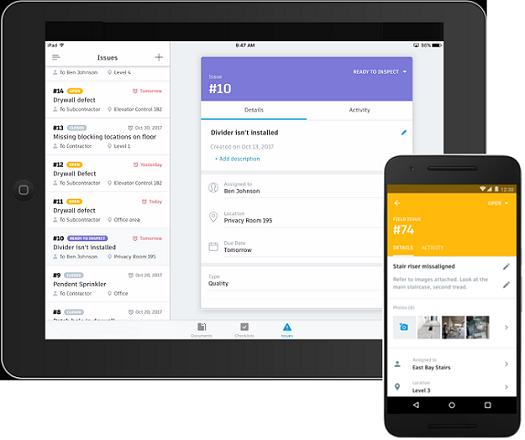
Critical to the construction process is the continual review and approval of work packages. Without 3rd party review, a building element may not be able to be signed off, meaning traceability has been lost and an OC is unlikely to be issued. Therefore, consultants must be engaged to check compliance where necessary throughout construction. Examples of below consultants, the inspections they complete, and requirement timelines are given:
Consultant Site Inspection Register
Consultant
Architect
Structural Engineer
BCA Consultant
DDA Consultant
Acoustic Consultant
PCA
Inspection
Inspect for compliance with plans, design intent and specifications.
Before any element is closed (reinforcement, structural steel), to ensure verification of compliance to documents, as well as throughout the project lifecycle generally.
Inspects all building elements to ensure compliance with the BCA – e.g., Fire Rating, Exit paths, substation, accessibility, installation procedure
Ensures compliance with DDA standards (e.g., AS1428).
Db checks on rooms throughout to ensure acoustic specification has met
Regular checks throughout construction verifying compliance to all necessary standards, to issue OC.
Requirement
At regular intervals throughout construction.
Weekly/daily during structure, then less frequently.
At critical phases – e.g., at completion of structure; before wall closing; and for achieving OC.
When installation of critical DDA components has been completed.
At completion, prior to OC.
Throughout construction.
To ensure samples of products to be installed are agreed upon by the client, as well as all relevant stakeholders - including the builder, architect, and relevant consultants - a process is to be put in place to enable verification of samples by these parties. The flowchart of this process is as follows:
Subcontractor is requested to provide samples of items to be installed, either as per specification or deviating from spec.
The builder will review these samples, and if deemed acceptable will submit them to consultants - e.g., architect, acoustic consultant, BCA consultantfor review.
Once reviewed, the sample will go to the client for final sign off, with records of all previous reviews and any comments to be submitted to the client to facilitate their review, acknowledging their position as a nonspecialist.
As a natural part of the construction cycle, defects in work completed will be present. Defects are managed in 2 ways on this project: initially, the builder will hold subcontractors responsible for their works, expecting completion to standards as defined in contract scope and project documents. Above this process, however, an external defects process occurs with the client. The client, on site walks and inspections, is free to raise defects, to which the builder is responsible for closing out. Defects may be raised before or after handover, however they represent the assurance process that ensures the client receives the final product - the building - as desired and designed.
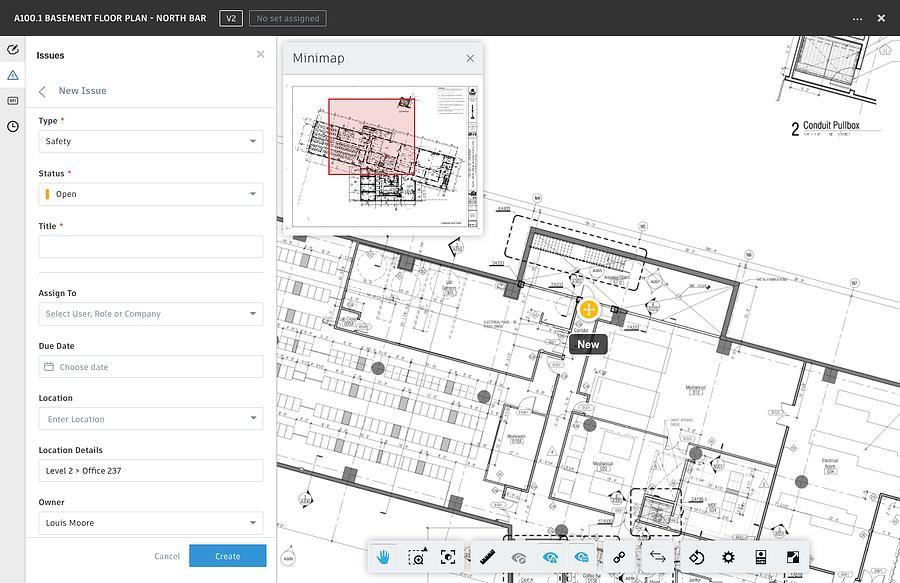
Fig. 28: An example of defect management in BIM360, using pushpins to show locations
A master ITP has been developed for the project, by the project team in consultation with all QA guidance above. This document will identify all:
- Necessary Inspections
- QA Record Submissions, and
- Hold Points
as they relate to Work Packages and respective specific work activities.
Each subcontractor’s work will be assessed with regards to head contract and regulatory requirements. The approach of the builder is to analyze risk for a given work item and assess the work accordingly. For example, completion of a concrete slab to a high level of quality is crucial to ensuring a quality outcome for the entire building, thus a stringent approach will be taken when assessing documentation, hold points etc.
Where hold points are specified in the head contract, these will be passed down to the subcontract scope For parts of the works to be inspected by a consultant, the builder will establish a sign off process with the relevant consultant prior to those parts of the works being covered up or concealed. All of the above activities will take place within the BIM360 system, described below.
The requirements for QA of subcontractor works will be included in the subcontract, in accordance with procurement management procedures detailed in Section 7. Subcontractors must submit their own ITP’s, which will be assessed prior to commencement. The builder will regularly inspect these ITP/QC checklists, and store records for future reference.
Refer page over for room sign off example. Refer Appendix A for QA Checklist example.
Room Sign Off / Close Out Form
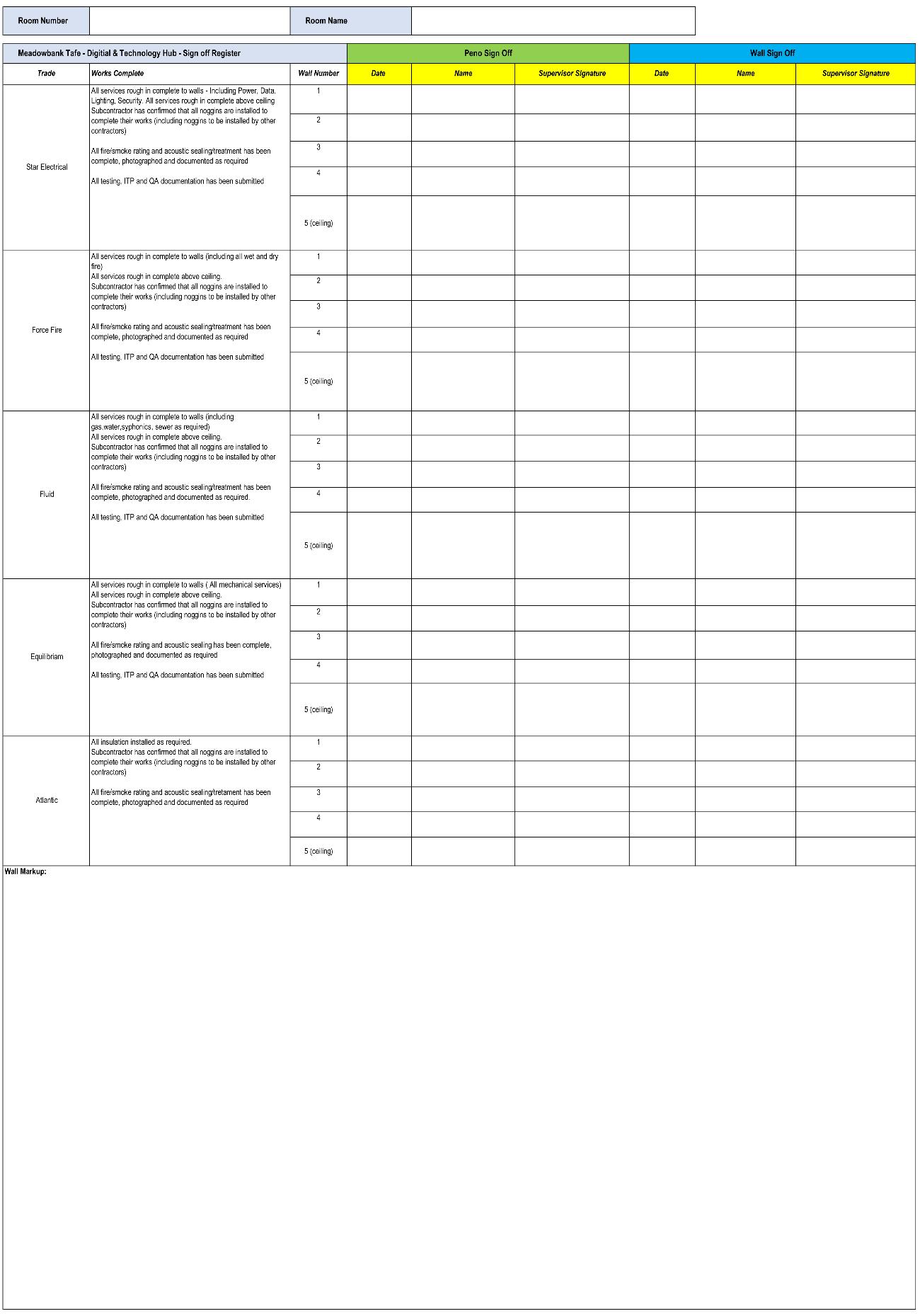
The critical Quality Management tool for the Meadowbank TAFE project is Autodesk’s BIM360 product. This is used as a cloud-based information gateway, hosting files as well as tools to enable tracking, closeout, and engagement with quality assurance objectives. BIM360 is used as the tool to implement the control measures, through document keeping, checklists and issue raising. This system augments traditional workflows by enabling clear, detailed, up-to-date, and traceable information at every stage of the defecting and quality management process, ensuring the best possible outcomes. Along with the builder’s team, subcontractors, architects, engineers, and other stakeholders can access the system and retrieve information that is specific and relevant.
The BIM360 system allows the project to be broken down into locations to facilitate analysis and reporting. This is done in accordance with the project Work Breakdown Structure (WBS). Quality checklists can then be scheduled in line with the program. Each checklist has all the relevant information for the builder to fill out. This includes relevant specifications and drawings. Checklists can then be filled out via iPads on site.
Following the above steps to complete QA checklists on site, reports can be generated through the system to allow tracking and communication of compliance. For example, once a report has been generated, an issue list including photos of defects can be easily distributed to the relevant project stakeholder, such as the responsible subcontractor. This allows for efficiently disseminating information to the wider project team.
Where non-compliance is discovered while completing a checklist, an issue can be raised, which will automatically be sent to the relevant subcontractor to rectify and close out. The following scenarios represent situations when an issue will be raised, with all records kept on the system:
▪ Works not meeting specified requirements
▪ Works not inspected or tested in accordance with specified requirements (frequency, method, authority)
▪ Works set out, inspected, or tested with equipment out of calibration or where the calibration status is unknown
▪ Specified hold or witness points have not been observed and signed off
The builder will then take corrective actions, if necessary, to rectify the issue. If the issue is such that the item may be placed into the works for later rectification, this will be noted. Any items reworked or repaired will be reinspected to ensure compliance with the contract requirements.
Quality Control is the distinct project process that involves ensuring all project deliverables meet their quality requirements, as defined in the Quality Management Plan and the contract documents. Specifically, this means objectively assessing deliverables against a standard and grading their ‘correctness’ - whether they meet the status of being verified and complete. Once verified, these deliverables can be formally submitted to the project sponsor for validation and acceptance.
While certification and acceptance of deliverables is main purpose of the Quality Control process, complexity arises when assessing quality on the scale of the entire project. At this scale, Quality Control becomes the process of analysing and understanding quality assurance and assessment and being able to identify patterns and issues to ensure that project requirements are met. In this way, QC becomes an ongoing and critical management process to ensure quality is being managed, assured, and guaranteed constantly. In order to meet this objective, a number of tools are used by the Project Manager / senior project members:
• As discussed in the previous section, reports can be generated from the BIM360 system, creating a document including photos and details which can be easily distributed to the relevant project stakeholder. These reports feed into the ability to generate statistics and analyze trends; allowing the team to measure subcontractor performance, track issue closure rates, and quickly identify trends. The Project Manager can also periodically review that appropriate corrective action is being taken and determine any trends occurring about problems or individual subcontractors or suppliers.
• Audits are carried out as per the Audit Schedule, by both the builder and client. These are carried out to evaluate and verify all aspects of the quality system implemented by the builder, subcontractors and suppliers are being met and ensure that the quality system is effective and corrective actions are being promptly implemented and achieving the desired results.
• Finally, retrospective tools such as flowcharts and histograms can be used to understand data and where issues tend to arise. Flowcharts - where causation can be determined if any fault in the quality of the output exists – allow detailed analysis, as well as if the output meets the required standard - allowing the team to determine which events were successful and beneficial Graphically understanding quality outputs, using diagrams like histograms to look at high-level project quality outcomes, also allows the team to analyze where repeated issues are occurring in the quality process.
The scope of this Risk Management Plan is to consider the detailed process for understanding, controlling, and managing risks throughout the lifecycle of the Meadowbank TAFE project. Project risks are broken down in the Risk Breakdown Structure, but generally comprise the following:
• Design Risk
• Commercial Risk
• Safety Risk
• Industrial Risks
• External Risks
• Management Risks
• Environmental Risks
To further establish context, risk management has been viewed as a clearly defined iterative process that occurs constantly during every project phase. The RMP has been broken down into crucial areas throughout the report. These are as follows:
1. Initially, risk management methodology is established, and the micro level risk management process specifically designed for the TAFE project has been described. These are the actions that every member of the project team should be undertaking through each crucial procedure of the project. The framework for contextualising, understanding, and controlling risks is created here.
2. Secondly, these tools are then applied to the project, creating a Risk Breakdown Structure and Risk Register – allowing an understanding of the myriad of effects and outcomes risks can carry.
3. Following this, the process for monitoring and controlling risks throughout the project lifecycle is detailed. This allows the team to collaborate and track risks, meeting contract requirements and assuring project deliverables.
Risk Management is a continual project process and is a critical business function of any construction company or individual project. For the Meadowbank TAFE project, roles are broken down as follows:
• Executive Team / Senior Executives
The Head Contractor’s executive team assist with the creation of the RMP in the first instance, and then exist in a high-level oversight role as the project progresses. With monthly reporting, senior management will directly review outstanding risks and opportunities collated by the project team, covering all disciplines.
• Project Manager
The PM is directly responsible for risks – from commercial, to design, to WHS etc. – on the project. Risk management and control is their duty (as a PCBU under WHS legislation). Correct implementation of the RMP, including monitoring of significant risks, as well as communication of risk to project stakeholders, both external and internal, is their key duty.
• Senior Contracts Administrator
The SCA is directly responsible for commercial risk on the project, reporting to the Project Manager and senior management. They will control risks by participating in subcontract drafting, ensuring that where possible subcontracts are principal friendly and reassign risk to subcontractors.
Further to the above, the SCA must understand all risks in the head contract and have a detailed understanding of crucial areas where risk must be managed, e.g., time management and reporting.
• Design Manager
The DM is responsible for technical and safety-in-design risks for the project, as well as commercial risks associated with design decisions. In the context of Meadowbank TAFE Multitrades Hub, this communicates to detailed reviews of design consultant contracts, as well as coordinating safety-in-design workshops, and ensuring design changes do not communicate into commercial risks.
In line with identified risks and the inherent risk profile of the project, at the time of budget determination a contingency allowance will be made for risks of all natures. This allowance considers identified project risks, uncertainty, and historic project performance data. Where risks are considered
likely, these will be included as direct trade reserve contingency amounts, as opposed to contributing to the total above the line contingency.
As identified risks have been accounted for in vertical trade reserves, the remainder of risk contingency amounts can be generated via expert judgement and general deterministic methods. For the Meadowbank TAFE, a standard risk allowance of 1.5% contingency has been allocated to the project.
• This amount is then compared to calculated worst case scenario risk cost outcomes, where risks are evaluated over the maximum term applicable, with costs per month calculated
• These two figures are then compared, and senior management will draw a finalised contingency total from the comparison.
To communicate and understand the risk profile for the project, as well as the originating cause of risks and their responsible area of Project Management, a Risk Breakdown Structure has been developed for the TAFE project. Risks are broadly defined as external (having causes or effects outside of the project’s sphere of control) and internal – being within the control or causation of the project itself.
Meadowbank TAFE Multi-Trades Hub Risk Breakdown Structure
Site-Based Risks
Internal Risks
Stakeholder Risks
Commercial Risks
Design Risks
Project Risks
Traffic Control Safety
Latent Conditions
Site Complexity
Staging
Project Staffing Experience
Client Communication
Subcontractor Competency
Delay Risk (Float)
Subcontract Departures
Liquidated Damages
Inaccurate Documentation
Lack of Scope Clarity
Design Intent Confusion
As-Built GreenStar Compliance
Programme
Cost
Governance
IMS
Change Management
Legal Environment
Political
External Risks
NCC Changes
SSDA Approval Requirements
Planning Approval
Election Cycle
Policy Change (Funding)
Economic Inflation
Global Shortages
Material Price Rise Tariffs
Industrial Relations
Union Cooperation Compliance
With an initial breakdown of identified high-level risks completed, the Risk management Plan now moves to identifying and mitigating individual risks. To do so, risk management tools must be established – these are the matrices which enable a project team to understand a risk, assign a ‘rating’ to it and therefore control and understand the risk.
The two defining factors in understanding any risk from the above RBS are the risk likelihood, and risk consequences. These matrices are as follows:
4 Major
o Major impact on company & stakeholder reputation
o Financial impact >$250k
o Major operational impact on Head Contractor or Client
o Sustained detrimental impact on company finances
o Environmental event with significant damage
o Causes, or has the potential to cause death or serious injury or involving the public
o Legislative or legal repercussions involving court proceedings
o Incident that will cause serious injury or has the potential to do so
o Financial impact >$10k
o Significant impact on organisational procedures
3 Moderate
2 Minor
o Corporate image and branding repercussions
o Major quality impact or impact on deliverable performance
o Legislative corrective actions
o Causes or has the potential to cause an incident involving a first aid response
o Financial impact <$10k
o Some operational impacts
o Short term impact on site operations
o Minor impact on project quality deliverables
o Injury reported for record keeping; illness
o Commercial or business opportunity with significant positive outcomes on revenue streams
o Opportunity to increase client deliverables at significantly reduced cost
o Significant positive impact on corporate image for both the client and Head Contractor
o Globally or nationally recognised positive outcome
o Positive contribution to client recognition
o Significant addition to client prescribed KPI’s, at a reduced cost
o Improved HSEQ performance at a reduced cost
o Improvement in Safety lead indicators
o Positive impact on contractual outcomes
o Delivers some commercial or site-based benefit on an ongoing basis
o Contributes to overall positive client perception
o Potentially offers internal benefits to project staff
1 Insignificant
o No financial impact
o No time impact
o Can be corrected immediately
o Minimal potential positive outcomes to internal or external stakeholders
o Delivers added value only on a single day basis
Having established an understanding of risk grading and categorising, these two factors can be combined in a matrix to calculate a risk score for each identified risk. This matrix allows risks to be mapped and prioritised, and rapidly graded to assist a project teams understanding when time pressure is significant.
Risk Action Outcomes
Serious >12
Serious >8
Medium >4
Moderate >3
Low >0
Immediate implementation of crisis management plan. Immediate and direct involvement of Senior Management in risk controls.
Detailed risk review conducted immediately by project team with communication to Senior Management ongoing.
Project team to review and control as part of monthly risk management workshop. Project Manager to be advised once identified.
Controlled and implemented on an ongoing basis, as part of standard risk register.
Monitor and control in line with existing day-to-day risk management techniques, including prestarts and toolbox talks.
With project risks identified and graded, responses and controls can now be implemented to treat risks and reduce the potential impact to the project. Risks must now be registered and recorded, to ensure contractual compliance and ease of understanding and communication. This leads to development of a risk register; a live document which ensures all identifiable risks have been analysed and controlled where necessary. The Risk Treatment and register creation process is as follows:
Risk, or residual risk, is identified and categorised using consequence and likelihood matrices.
Controls are implemented by project team. To close out the risk management process, the residual risk is identified.
Risk Management Plan is utilised to coordinate risk response, and involve related parties where necessary.
If new controls are required, these are detailed along with legislation in the Risk & Oppurtunity Register.
Risk Register entry is created. Existing controls are evaluated to ensure the risk does not require additional resourcing.
With a methodology outlined to systematically record risks, methods for their control can be outlined. These are the commonly identified hierarchy of risk controls and are in line with common practice globally. The hierarchy visualised below is utilised for WHS risks; however, the control hierarchy still applies to all identified risks on the project, in slightly differing manners. These are as follows:
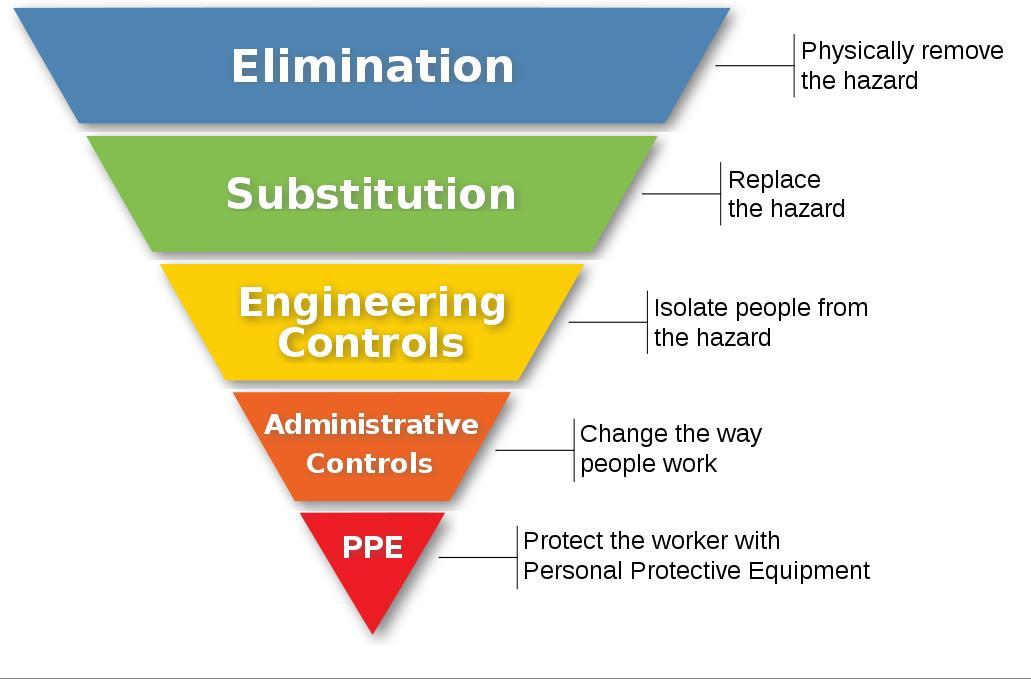
• Elimination / Transfer: Here, risks are removed if possible. This can consist of allocating the risk to another party, or completely removing the hazard from site.
• Substitution: Involves replacing the hazardous task, activity or commercial operation with a less risky methodology – e.g. rewording contract clauses to remove risk obligation.
• Engineering Controls / Mitigation: Physical isolation is placed between the individual and the risk, limiting potential impacts.
• Administrative Controls: Procedures and guidelines are updated where possible to limit exposure.
Along with the identified hierarchy of risk control, there are specific pre-construction control methods associated with design risks. These are risks evident where a design choice has the potential to create a risk (Safety or other) during either construction completion or operation of the building. All consultants have a legal responsibility to ensure safe design during both construction and post certification for occupancy.
Using the CHAIR process (Construction Hazard Assessment and Implication Review) provides a rigorous framework for a facilitated discussion. As part of the process, key stakeholders collectively identify and reduce construction, maintenance, repair and demolition safety risks associated with design. Risks identified are then listed for action.
The CHAIR process is undertaken in tandem with a 4D BIM Process:
• The design model is used to aid safety in design workshops. Models can be viewed in real time and modelled in 4D, allowing buildability to be analysed
• Early involvement Head Contractors, as is the case with Meadowbank TAFE, can aid in providing expert opinion on safety in design risks.
• When developing SWMS, previously identified risks can be utilised to ensure safety risks are captured.
With a clear HIRAC (Hazard Identification, Risk Assessment and Control) process defined, these tools can be implemented to produce a sample Risk & Opportunity Register for the Meadowbank TAFE project.
Meadowbank TAFE
Status Date: 12/11/21
Detail impacts e.g. cost,
Identify
Geotechnical engineering reports have identified the soil to the South of the site is highly unstable and at risk of collapse
Safety risks to machine operators and personnel
Financial risks to delayed progress Time risks to programme
Commercial risks with unclear contract obligations
Identify control hierarchy method
Describe implemented controls, either existing or proposed
Reassess risk using original matrix, ensuring the result is below the acceptance threshold
Geotechnical report has identified that grout injection/underpinning may be used to solidify the soil beneath. This will require some investment, but eliminate the risk 3
Low
Identify the Risk Owner
Outline ongoing monitoring methods
Project Manager Responsible
Ongoing –control method will be verified by engineer’s inspection
The thresholds for residual risk acceptance must be outlined to ensure the project team has a clear, understood guidance tool for when control methods have been successfully implemented.
• The agreed risk threshold for this project is a residual risk score of 4 – Moderate. This is due to the excellent client communication channels, as well as the large and relatively uncomplicated site. While risks do exist, control measures are easily monitored by project personnel.
As component of the creation of the Risk & Opportunity Register, is the ongoing process of risk management. Revision of the register should occur at a minimum monthly; this ensures newly identified risks are controlled and recorded correctly – and allows for communication to the wider workforce.
An ongoing management process also allows for correct consultation with workers, complying with Industrial relations and WHS guidelines.
We aim to provide TAFE NSW with a result that is accurate to the scope and embodies their communicated conceptual and operational requirements for the final completed building Our stakeholder management process aims to create value for the client and resolve issues efficiently. We will achieve this for TAFE NSW by executing the following:
1. Identifying, and workshopping with stakeholders consistently throughout the project lifecycle in order to achieve desired outcomes.
2. Planning and executing effective and ongoing engagement with TAFE Meadowbank Hub stakeholders
3. Assess and manage stakeholder's expectations.
4. Propose workshop value engineering opportunities tailored to the project's key stakeholders.
5. Allocate appropriate resources to settle stakeholder concerns and pressing milestones
6. Communicating regularly and consistently through workshop meetings, in person and online communications and digital engagement strategies
Project stakeholders need to be properly identified and allocated to the correct stakeholder category This process identifies stakeholders that have stake and influence over the project and splits them into one of two categories:
Internal Stakeholders: Stakeholder group that has contractual obligation to the project
External Stakeholders: Stakeholder group that has no contractual obligation to the project
The Stakeholder groups are then analyzed through a project Stakeholder register which highlights stakeholder expectations, influence, Internal/External Status, Engagement level and Management Action Status.
High Stake / Interest
High Influence / Power
• Developer/Client
• Head Contracted Builder
• Client Project Management
• Allocated Consultants
Low Stake/ Interest
• City of Ryde Council
• CFMEU
Low Influence / Power
• The Head Architect
• Additional Consultants
• TAFE Community
• Media
• Local Community
• Subcontracted Companies
The register below highlights the projects key stakeholders and their individual interest and involvement with the TAFE HUB, these stakeholders will be communicating on an ongoing basis throughout the projects design and construction An additional table has been included to highlight more specific details regarding interest, involvement, and concerns.
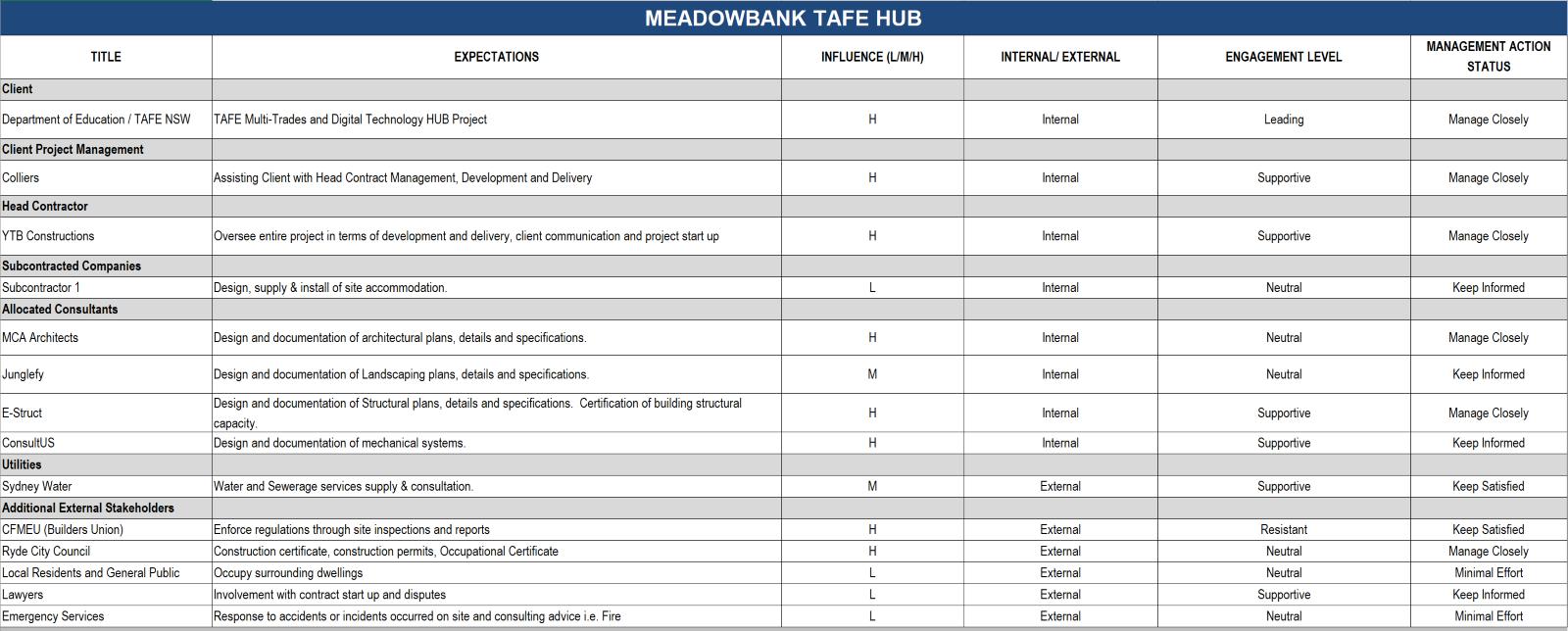
Developer/ Client:
• TAFE/NSW Government
Consultants:
• Architect
• MEP Consultants
• Landscaping
• Structural
• Traffic Management
Head Contractor:
• Hansen Yuncken
• Successful application and progression through authority approvals
• Successful design and construction of the TAFE Hub
• Financial commitment
• Successful delivery of the design documentation
• Successful progression through authority approvals
• Successful coordination with the builder
• Successful coordination and delivery of the design and construction of the new TAFE Hub
• Financial mismanagement
• Reliability and integrity of contractors and consultants
• Quality
• Delays
• The management of the TAFE live environment.
• Changes in design
• Inaccuracy in design outputs
• Inaccuracy in client's brief
• Reliability and integrity of contractors and consultants
• Quality
• Delays
Government agencies and peak bodies:
• Transport for NSW
• Roads and Maritime Services NSW
• Fire and Rescue NSW
• NSW Department of Education
• NSW Department of Planning and Environment
• NSW Environmental Protection Authority
• NSW Rural Fire Service
• Sydney Water
• NSW Heritage Council
• NSW Office of Environment and Heritage
• NSW Department of Premier and Cabinet
Local Council – City of Ryde Council:
• Councilors
• Mayor
TAFE communities:
• Teachers
• Staff
• Students
• The management of the TAFE live environment
• Local roads will experience increase in traffic congestion, planning and managing this increase
• Organizing and planning appropriate public transp ort access
• Planning emergency service access and confirming all new road meet standards for fire and ambulance services
• Confirm the development is compliant
• Protecting and reducing projects impact on heritage items
• Non-Compliance
• Schedule for construction and opening of TAFE
• Plans for enrolled students during construction of the new TAFE
• Impacts to the local community including noise, congestion and traffic
• Shared use of community spaces
• Providing amenities to meet increase population density
• Education environment and amenities provided at the new Meadowbank TAFE
• Quality and usability of the facilities upon completion
• Non-Compliance
• Safety of staff and students
• Local community:
• Residents
• Businesses
• Impact of TAFEs new facilities to the public
• Impact on public amenities and facilities during progression of construction works.
• Noise and dust impacts
• Increase in local traffic and congestion
• Pedestrian and community safety
Once the identification and analysis of the TAFE HUB stakeholders has been completed it is crucial strategic stakeholder engagement is established and implemented. The project team has developed the following desired outcomes for the stakeholder engagement process
• Establish common goals throughout the project stakeholders.
• Develop and deliver mutually beneficial outcomes
• Develop and deliver achievable and tailored milestones
• Achieve ‘buy-in’ from the project's Internal stakeholders
• Clarify and highlight all stakeholder requirements and expectations in explicit terms.
• Implement and allocate measurable goals to the appropriate resource with an assigned deadline
The actualized measures that have been implemented throughout the project consist of the following:
• Regular workshops with the involvement of internal stakeholders as required.
• Fortnightly project update meetings.
• Weekly design and consultant (OAC) meetings.
• Weekly meeting with the head contractor
• Involvement and inclusion of stakeholders in special events (Topping Out Ceremony)
• Quarterly meetings/forums with end user groups such as TAFE Staff and the local community.
• Online coordination and engagement with internal stakeholders through platforms such as Quip, Slack and Email.
• Scheduled Priority Technical Reference Group Meetings
A key aspect of our strategy to maintain Stakeholder engagement and uphold project communications is to establish a Technical Reference Group (TRG) for the project. This group is prioirtised and is established within the planning stage of the project. It is comprised of nominated representatives from all internal stakeholders, including core members of the TAFE community.
The aim of the group is to optimise design processes, streamline core project outcomes and provide an open forum for effective and consistent stakeholder communication.
The TRG will also:
- Encourage the discussion and open exchange of project related information; Identify issues and concerns; Provide feedback to various stakeholders; Promote collaboration
The communications plan implemented by YTB Consulting aims to outline the details regarding roles and responsibilities for project stakeholder communication. The plan also aims to highlight the goals, deliverables, and requirements for communication. The procedures and processes involved are also detailed. The communication deliverables detailed below have been implemented throughout the project consist of the following:
Project Commencement meeting
Audience: Delivery Team, Client, Key Stakeholders
Description: Identify key considerations and introduction of key project members.
Project Control Group (PCG)
Audience: Project Team, Client, Key Stakeholders
Description: Monthly meeting to status key items identified in project performance report.
6-week look ahead
Audience: Delivery Team, Client, Key Subcontractors
Description: Co-ordination meeting for upcoming works and advise on key design changes.
Community Stakeholder Meeting
Audience: Project Manager, Client, Community, Council
Description: Open forum to advise community of upcoming works and potential impacts.
Safety Reporting
Audience: Client, WHSE Manager
Description: Weekly safety report and inspection
Financial Reporting
Audience: Accounts
Description: Financial Health Updates, including Cash Flows and financial risks.
Toolbox Meeting
Audience: Site team
Description: Onsite meeting to convey upcoming works and potential hazards / risks associated
ITWOcx has been selected as the main Project Management Information system (PMIS)implemented for the distribution of all documentation for the project. ITWOcx has been implemented for consistent and reliable communication with the project's client, subcontractor, suppliers and consultants The commercial team and the senior leadership team will be responsible for managing and utilizing the software
Reporting period: 28/11/21 - 5/12/21
Date of report: 4/12/21
Project title: TAFE HUB
Project manager: Report author: John Walker
EXECUTIVE SUMMARY
Narrativ e Summar y of Status
PROJECT MILESTONE STATUS REVIEW
Milsestone
STATUS OF PLANNED ACTIVITIES
Scheduled accomplishments in this period:
Project Sponsor:
Scheduled but not accomplished:
Scheduled actions for the next period:
PROJECT ISSUES SUMMARY
ID Priority Issue Description Summary Action Steps
PROJECT RISK SUMMARY
ID Priority Probability of Occurrence Risk Description Summary Response
SIGNATURE & APPROVAL
ID Name & Role
SIGNATURE
The CPMP has been finalized as a detailed guideline document created to guide and structure the delivery of the Meadowbank TAFE Multi-Trades Hub and associated works. Adherence to the CPMP in its entirety outlines a framework for managing every facet of the construction project and ensuring successful project delivery for all stakeholders involved. Critical points in summary are as follows:
• Safety is a key priority for every stakeholder involved. Adherence to the CPMP will ensure ‘everyone home safe’ and provide improvements to the industry.
• Development and upkeep of the CPMP is a necessary component of its evolution. Participation by all team members in this process will ensure the document becomes a critical reference and guidance tool, delivering value to all team members now and in the future.
YTB Consulting recommends the adoption of the CPMP in its entirety, with any modifications to be made in consultation with YTB to ensure validity now and well into the future.
Architecture AU, 2020. Major education precinct underway in Sydney's north west. [online] ArchitectureAU. Available at: <https://architectureau.com/articles/major-education-precinct-underway-in-sydneys-north-west/> [Accessed 19 November 2021].
Breaugh et al, 2008, A model of the recruitment process, Employee recruitment: Current knowledge and important areas for future research’, Human Resource Management Review, Vol. 18, Issue 3, pp. 103–118.
Chin, S. et.al, n.d., A Project Progress Measurement and Management System, p. 3, accessed on 24 March 2017, <https://www.irbnet.de/daten/iconda/CIB13684.pdf>
Department of Premier and Cabinet 2011, NSW 2021 A plan to make NSW number one, accessed 5 March 2017, <http://www.ipc.nsw.gov.au/sites/default/files/file_manager/NSW2021_WEBVERSION.pdf>.
Infrastructure Partnerships Australia, 2021. Meadowbank Education and Employment precinct - Infrastructure Pipeline. [online] Infrastructurepipeline.org. Available at: <https://infrastructurepipeline.org/project/meadowbank-education-and-employmentprecinct> [Accessed 15 November 2021].
Inglesis, P. (2013). 7 Useful Quality KPIs for a Construction Project. Quality in Construction, accessed 17 May 2017. <http://www.qualityinconstruction.com/7-useful-quality-kpis-for-a-construction-project/>.
MyPM LLC, 2015, Scope Statement Template, accessed 12 March 2017, <http://www.mypmllc.com/project-managementresources/free-project-management-templates/scope- statement-template/?>.
Newell, S. and Shackleton, V. 2000, Recruitment and Selection, Blackwell Publishers Ltd, UK, p.116.
NSW Government Planning & Environment 2015, Major Projects Assessments, SSD 7024, accessed 5 March 2017,<http://majorprojects.planning.nsw.gov.au/index.pl?action=view_job&job_id=7411>.
Oberlander, G.D. 2000, Project Manager for Engineering and Construction, 2nd edn., McGraw-Hill, Singapore.
Procurement Transformation Division Department of Housing and Public Works, Queensland Government 2014, Procurement guidance: Managing and monitoring suppliers’ performance, p.11-16.
Project Controls Online 2012, Project Controls: What is it and why is it important?, accessed 17 April 2017, <http://www.projectcontrolsonline.com/Home/DefinitionandImportanceofProjectControls.aspx>.
Project Management Institute, 2013, A Guide to the Project Management Body of Knowledge, Fifth Edition (PMBOK® Guide), Project Management Institute, Pennsylvania.
Saltmarsh, C. and Hackett, B., 2020. TAFE NSW Meadowbank Education and Employment Precinct. [online] Gray Puksand. Available at: <https://www.graypuksand.com.au/enabling-industry-co-location-in-nsw-vocational-education-and-training/> [Accessed 11 November 2021].
TAFE NSW, 2021. Meadowbank Education and Employment Precinct - TAFE NSW. [online] Tafensw.edu.au. Available at: <https://www.tafensw.edu.au/meadowbankprecinct> [Accessed 18 November 2021].
Appendix A – QA Checklist Example